












55 | SPRING 2025
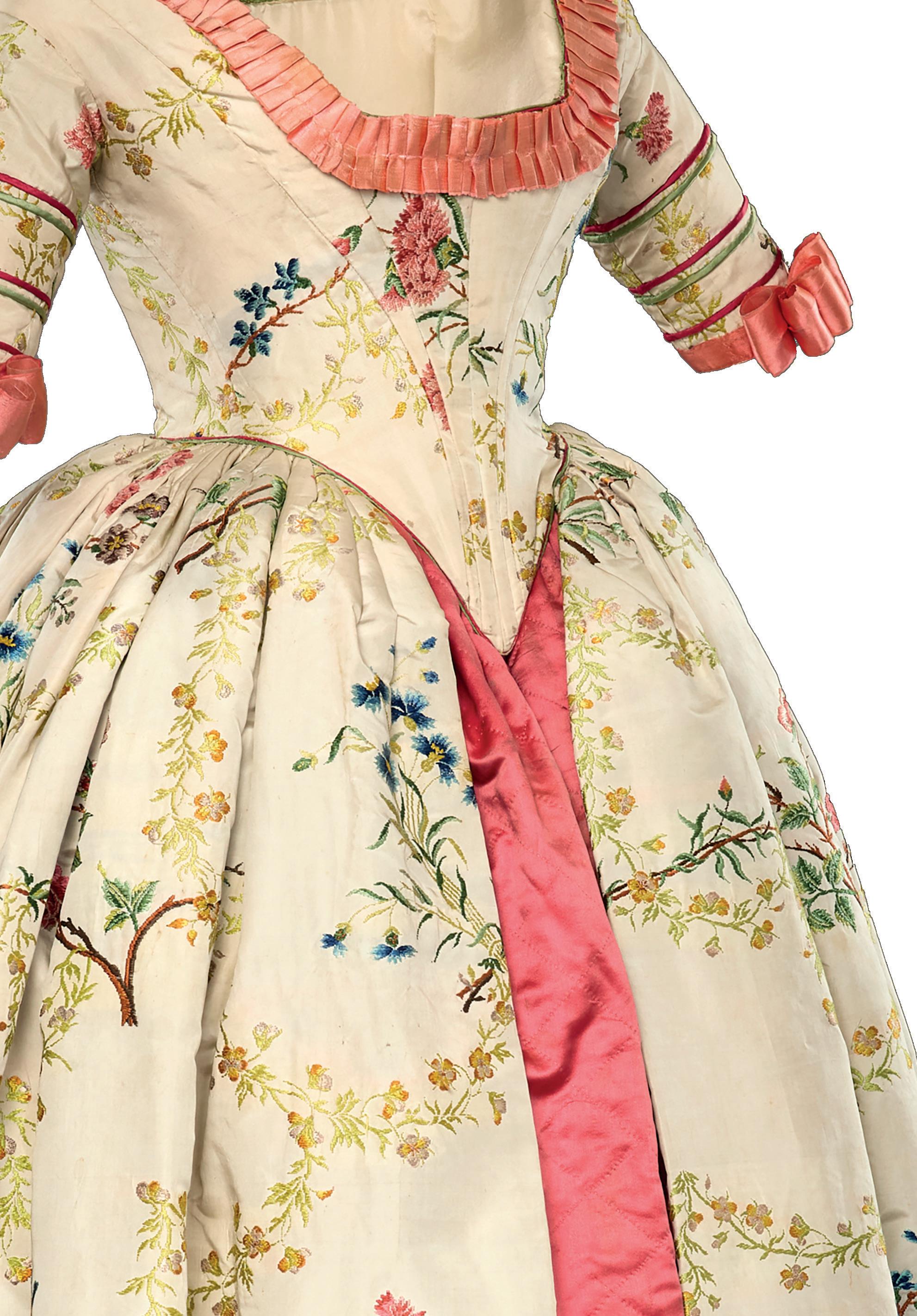
Historic Royal Palaces is an independent charity, and we rely on your support to continue to preserve the magnificent palaces and gardens in our care.
If you’re a UK tax payer and have not yet opted-in to Gift Aid, please email us at members@hrp.org.uk, and we can claim an extra 25p per £1 of your membership fee from the government, at no extra cost to you


… to our fresh spring issue!
This is the time to celebrate new beginnings, and for looking forward to the year ahead, so a warm welcome to any brand-new members reading Inside Story for the first time. This is your exclusive magazine, every issue bursting with ways to enjoy your membership to the full, plus discounts, exclusive competitions and special offers.

Detail of an open robe, c1845, a 19thcentury imitation of an 18th-century dress. You can see this stunning robe in our new ‘Dress Codes’ exhibition (page 14).
As well as all the beautiful blooms of spring in the palace gardens (page 26) we are very excited about the fabulous new exhibition at Kensington Palace (page 12). ‘Dress Codes’ (opens 13 March, members go free) explores the complex world of making – and breaking – royal dress rules, showing some never-before-seen treasures from the Royal Ceremonial Dress Collection. The exhibition looks forward, too, featuring contributions from talented local Young Producers inspired by the historic displays (page 16). And in Behind the Seams (page 18) our Textile Conservators reveal the secrets they discovered as they worked on these fabulous collection items.
Spring cleaning in a palace needs to be done very carefully indeed, as you will discover in Waking up Kew Palace (page 44). Little Kew Palace was fortunate to escape serious damage during the Second World War, but our other palaces suffered under wartime bombs. As we commemorate the 80th anniversary of VE (Victory in Europe) Day, we look at the role of these inspiring buildings, and the people in them, during the war (page 20). While they were built to last, our palaces still need our constant care and attention. Read What’s Happening Here? (page 32) to discover how our building surveyors plan and oversee the essential repair and maintenance projects that your membership helps to fund.
Thank you, as always, for your

Angie Faires Head of Marketing and Membership
Published by Historic Royal Palaces, Hampton Court Palace, Surrey, KT8 9AU.
In-house editor: Clare Murphy
External editor: Sarah Kilby
© Historic Royal Palaces 2025. All rights reserved. No part of this publication may be reproduced or transmitted in any form or by any means, electronic or mechanical, including photocopying, recording or any information storage or retrieval system, without permission in writing from the publisher.
Unless otherwise stated, all images are © Historic Royal Palaces.
Historic Royal Palaces is a registered charity (No 1068852)
Contact us: insidestory@hrp.org.uk




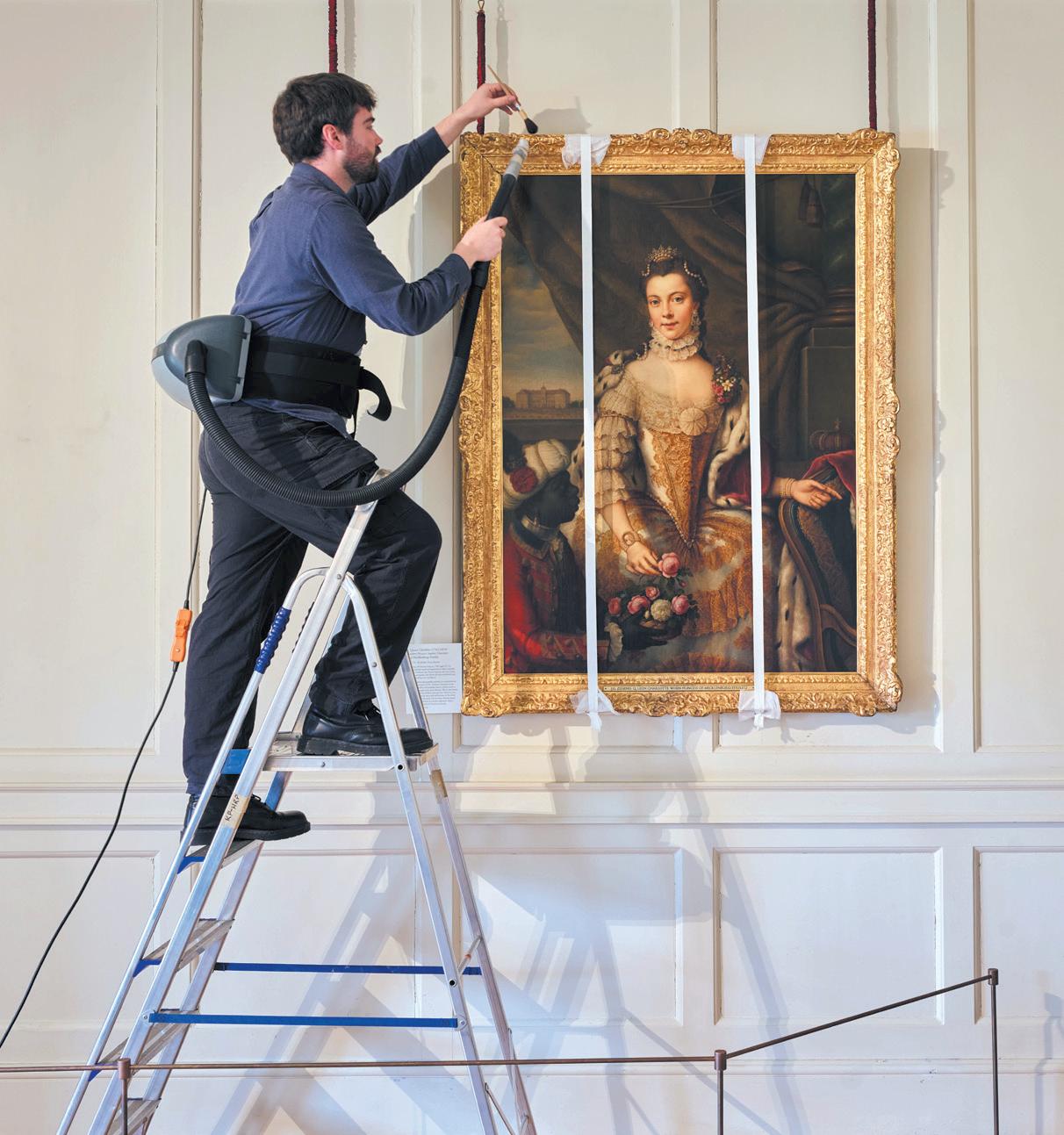
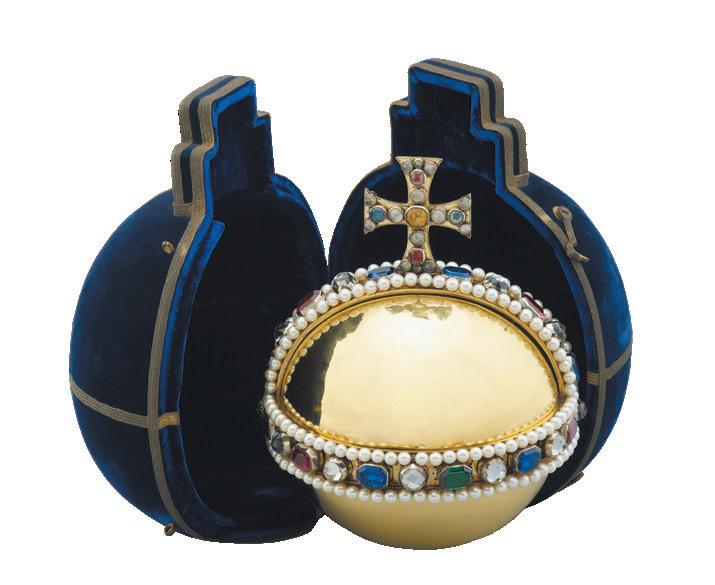



Make the most of your membership when you visit our wonderful palaces and gardens.
Did you know that Historic Royal Palaces cares for four sites within Kew Gardens: Kew Palace, the Royal Kitchens, Queen Charlotte’s Cottage and the Great Pagoda? Using code HRP10, enjoy 10% off tickets for Kew Gardens to explore these fascinating spaces during seasonal opening (29 March –28 September 2025). Once inside, join a daily tour with a costumed host to discover more about King George III, Queen Charlotte and their family, or visit areas not usually open to the public on a Hidden Spaces tour. Daily tours available from 22 April; members go free. Feeling energetic? Climb the 253 steps of the Great Pagoda to enjoy glorious views across London (separate ticket, members go free). Book your discounted entry ticket online at kew.org or show your membership card at Kew Gardens ticket desks.
As a member, you benefit from free or discounted entry to a wide range of events including special exhibitions, festivals and fayres. Plus, enjoy an exclusive programme of members-only events including tours, talks, behindthe-scenes peeks and much more throughout the year.
Visit hrp.org.uk/whats-on-allthe-palaces to find out if you should pre-book your tickets.

We’ll let you know about the latest member exclusives, events, early ticket releases and discounts in our regular email newsletters.
Email: members@ hrp.org.uk to …
• Change your membership details
• Update your contact preferences, including email newsletters
• Ask us any questions
Visit: hrp.org.uk for …
• Opening days and times
• Access information
• Things to see and do
• More about our buildings and collections
As a member, you can enjoy free, unlimited entry to some of the UK’s most iconic palaces: Tower of London, Hampton Court Palace, Kensington Palace and Hillsborough Castle and Gardens, as many times as you like.
For general admission, simply present your membership card on entry.
Pre-booking is required for select palace events and exhibitions, and exclusive member events.
Visit hrp.org.uk to check opening hours, see what’s on and find out if you should pre-book.
There will be changes to how you log in to pre-book this year; look out for our email updates, which will help you set up your new customer account. Tips
THANK YOU
The Banqueting House remains closed for essential conservation and maintenance work and will reopen later this year. We are grateful to the Garfield Weston Foundation and the Wolfson Foundation for supporting this project. And thank you to you, our members, for contributing to these vital works. Keep an eye out for some of the exciting discoveries our teams have made along the way in your next issue.
Don’t miss: On 04 May, Kew Palace will come to life with free music recitals throughout the day from chamber group, Saraband, who will be performing in the King’s Dining Room. Supported by the Continuo Foundation. No pre-booking required. Separate ticket required for entry to Kew Gardens.

Bring your membership card on every visit to enjoy 10% off in our shops and cafés, plus enjoy 10% off in our online shop with code MEMBER25*
Enjoy an extra special 20% off in our online shop, 18-21 April.
*Exclusions may apply

Unlock behind-the-scenes digital content, curated especially for you, our members, on your digital hub. Get closer to the palaces and our history through expert interviews, thought-provoking podcasts, videos and fun family activities.
Follow: Historic Royal Palaces on …
• X
We’d love to see how you’re making the most of your membership!
Post your photos with the hashtag #PalacePhoto.
Put us ‘On the spot’! In the next issue, we put Alexandra Stevenson, Curator of Archaeology and Historic Buildings in the hot seat. Send in your questions and see her answers in print, by emailing insidestory@hrp.org.uk before 31 March.

‘Royal Style in the Making’, a new temporary exhibition has opened in the Stable Yard Gallery. The exhibition explores the intimate relationship between fashion designer and royal client, revealing the process behind the creation of some of their most important couture commissions. Discover original sketches, embroidery samples, letters, unseen photographs and film footage, as well as items of royal dress.
Returning for a third year, Spring Spectacular will once again transform the royal grounds. Our gardeners have planted thousands of bulbs; enjoy a riot of spring colour with waves of different plants taking their turn to bloom until May.
Visit between 05 May and 11 November to see a very special display of some of the 2014 ceramic poppies, returning to mark the 80th anniversary of the end of the Second World War.
Join us on 22 May for your Members-Only Preview of the Medieval Palace. Discover the luxurious lodgings of Henry III, Edward I and their queens, brought to life with new displays, storytelling, animation and sound and light effects.
Be part of an ancient tradition by attending one of our members-only opportunities to witness the Ceremony of the Keys, held nightly for over 700 years.
Back by popular demand, the Lindt GOLD BUNNY Hunt will return to Hillsborough Castle and Gardens at Easter.
Join the self-led trail to discover the GOLD BUNNY statues and enjoy a delicious 10g chocolate treat (non-chocolate alternative available on request).
Join a Yeoman Warder tour to hear tales of intrigue, imprisonment, execution and much more.

Head to the Wilderness to witness the famous daffodil display, where over a million bulbs create a vibrant yellow and orange carpet each spring. This Easter, bring the family to find Lindt GOLD BUNNY statues in the gardens. Follow the hunt and collect a 10g chocolate reward (non-chocolate alternative available on request).
NEW this May, the Feel Good Festival brings wellness workshops, craft masterclasses, inspiring talks with wellness experts, street food and activities for all ages. It's a celebration of joy, relaxation and togetherness.
NEW this late May bank holiday, expect family fun, music, circus and surprises at the Big Bahooey
See Beatrix Potter’s beloved characters brought to life at The Peter Rabbit™ Adventure, a NEW trail coming to the gardens this summer.
Don’t miss the last RHS Hampton Court Palace Garden Festival until 2027, 01-06 July 2025. Enjoy £3 off all-day adult tickets using code HRPM25 when booking online. Code valid Thursday-Sunday for a maximum of 4 public tickets.
Throughout April, enjoy the Tulip Festival. Discover historic varieties and pop-up garden displays while learning the fascinating story of this beloved perennial. Return in May to see bluebells in the Wilderness.
Discover street food, pop-up bars and live music at the Food Festival in August and from 05 to 07 September, see 60 of the world’s rarest cars at the Concours of Elegance, with 50% off tickets using code HRP25.
‘Royal Style in the Making’ 15 March 2025 – 04 January 2026 (Members' Preview 14 March)
Spring Spectacular 15 March – 05 May (subject to weather)
St Patrick’s Day music and storytelling sessions 16 March
Lindt GOLD BUNNY Hunt 12-27 April AT A GLANCE
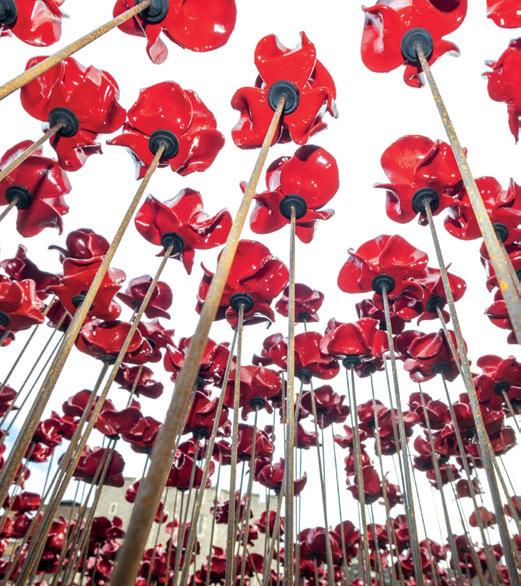
Pre-booking required for select events and exhibitions. Visit hrp.org.uk and see our What’s On pages to find out if you should pre-book.

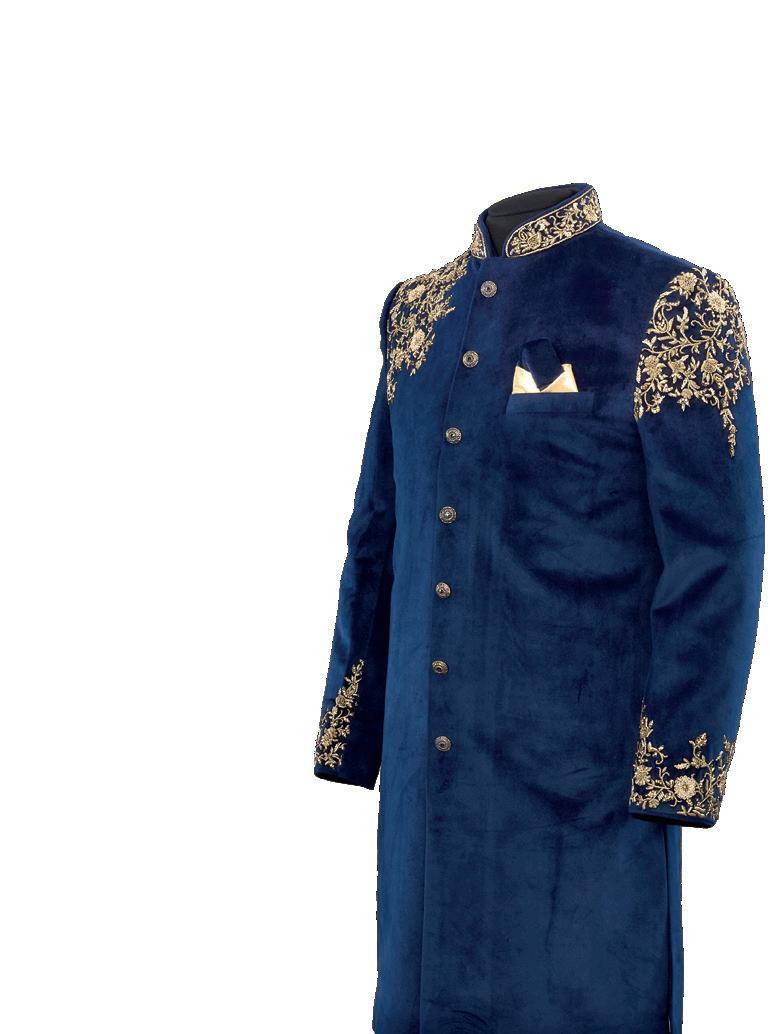

‘Dress Codes’, our new exhibition at Kensington Palace is now open, exploring the making – and breaking – of royal style codes. Discover and decode items of royal and court dress from the Royal Ceremonial Dress Collection, some never seen before.

Every issue, we bring you the latest developments from across the palaces

The annual Hampton Court Palace Tulip Festival received the ultimate accolade at the World Tulip Summit in The Hague recently.
Our Head Gardener, Graham Dillamore (see page 52) was presented with the World Tulip Award for Britain’s Largest and Greatest Tulip Heritage
Garden, in the presence of ambassadors and diplomats of the participating countries.
Ibo Gülsen, Chair of the World Tulip Society said: ‘The Tulip Festival at Hampton Court Palace offers visitors a unique experience highlighting both the horticultural and cultural heritage of this beloved flower through stunning outdoor displays, excellent
interpretation, and an inspirational event for all who attend.’
Congratulations to our hardworking gardeners and the team of volunteers who plant the 100,000 bulbs needed for the stunning displays each year. Don’t miss the festival this year, 11 April to 05 May (subject to weather). Members go free.
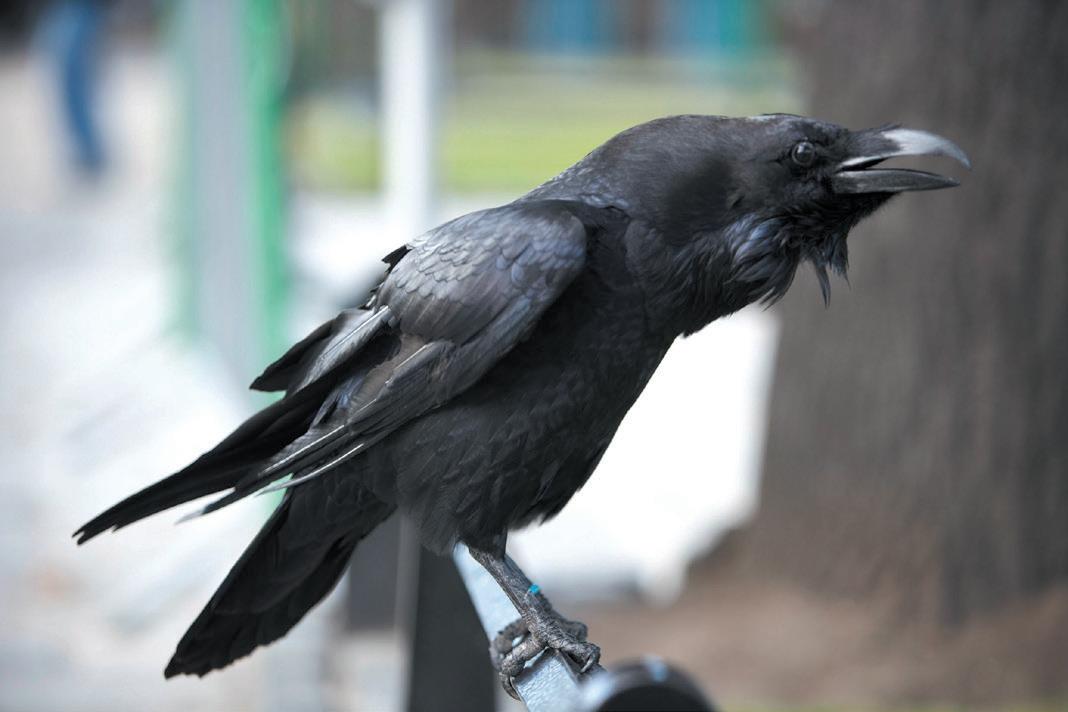
The Tower of London’s Ravenmaster and his team have recently completed a week-long falconry course at the Willows Bird of Prey Centre at Tunbridge Wells in Kent, and are now putting their new-found skills into practice, looking after our iconic Ravens.
The team have introduced new cleaning routines, installed artificial turf in their cages and new feeding troughs so the birds eat their
food above soil level, to avoid the spread of any ground dwelling parasites.
The Ravenmaster has also been working with London Zoo’s animal trainer to coach our rascally Ravens, who can be a bit mischievous at times!
Look out for some very well-behaved birds on your next visit to the Tower (but despite them learning some manners, don’t get too close as they can’t resist a juicy-looking finger!).
Over the past year, our Digital Engagement team has been developing our blog and podcast programme, with lots of great new content.
We are now publishing at least two blog posts a month on a huge range of topics, from ‘George Villiers, 1st Duke of Buckingham’ to ‘Sustainable composting at Hillsborough Castle and Gardens’. And don’t miss our new blog posts exploring aspects of the ‘Dress Codes’ exhibition (see page 12). Podcast episodes are either standalone, such as ‘Graffiti at the Tower of London’, or part of a series, including ‘A Space I Love’ or ‘The Wars of the Roses’. You can explore our blog posts at hrp.org.uk/blog and listen to our podcasts at Historic Royal Palaces Podcast, available on Spotify and Apple Podcasts (also available as transcripts). Keep reading, keep listening – and keep enjoying!
A voluntary £1.00 donation scheme in the Orangery at Kensington Palace is generating thousands of pounds in support of our community programmes.

Our Retail team has been working with resident caterers Company of Cooks to run a special fundraising initiative in the newly refurbished restaurant. Guests enjoying an afternoon cream tea can donate an optional £1.00 when making their purchase, and within six months, our tea-takers’ generosity has raised £28,000!
These donations are being used specifically to support our work with local community groups, including the Warm Space initiative, which provides a friendly environment for local adults in need of warmth and community, and our Community Access Scheme.
A beautiful album of drawings, including four by Queen Victoria, has recently been acquired for our palace collections.
Compiled by Augusta Hayter, daughter-in-law of Sir George Hayter, Principal Painter in Ordinary to Queen Victoria, the album includes works by 19th-century artists including Sir George, other Hayter family artists and James Roberts.
Three of the sketches by Victoria were made in 1833, when she was only 14 years old and still a princess. One from 1838, the year after her
accession, is a self-portrait showing the young Queen wearing a crown and sash.
From 1840, George Hayter became Victoria’s art tutor, and the album contains several sketches of Arthurian scenes in his hand, which were possibly used as teaching tools for his student.
Other highlights from the album include a number of preparatory sketches by Hayter for the official coronation and state portraits of the Queen and a further sketch of Victoria by her tutor captioned ‘Drawn with my eyes shut’.
From James Roberts, there is a colourful drawing of the Queen’s birthday table, piled with gifts in 1856 at Osborne House, where she spent many of her birthdays from 1846 to 1861. The album is destined for future display at Kensington Palace in our permanent exhibition ‘Victoria: A Royal Childhood’. Members go free.

After a rigorous process of independent external inspection and observation, we were delighted to be announced as the winner of the Sandford Award for Heritage Education (2024) for our programme at Hillsborough Castle and Gardens.
The Sandford Award is the quality mark for heritage learning and we are already


holders of the award for our work at Hampton Court and the Tower of London.
The judges said: ‘Hillsborough Castle and Gardens offers a sensory adventure of learning across this vast site, carefully designed and delivered to enable all to learn and enjoy their visit to this beautiful Georgian Castle and its stunning grounds ...
From March 2025, the magnificent Valasse Cross will be on display at the Tower of London, thanks to a loan from the Musée des Antiquités (Rouen Métropole Normandie) in France and the generous support of The Syder Foundation.
This beautiful gold and silver cross is adorned with sapphires, garnets and other precious stones. On the front is set an ancient relic thought to be a piece of the True Cross. According to tradition,
one part of this exquisite object was gifted by Empress Matilda of England, or her son Henry II, to the Abbey of Valasse in Normandy, which Matilda had founded in 1157.
Matilda was the daughter and chosen heir of King Henry I and fought fiercely for her succession against her cousin King Stephen during the period of civil war known as ‘The Anarchy’. The Valasse Cross, which was made around the same time as the Coronation Spoon in the Crown Jewels, will be
Wider interpretation, resources and collections ensure visitors can explore the huge significance of this place in local, national and international affairs from a range of perspectives ... Hillsborough Castle and Gardens is thoroughly deserving of its first Sandford Award’.

displayed in the Chapel of St John the Evangelist in the White Tower.
This is a once in a lifetime opportunity to see this rare, royal, religious object on display in a space used for medieval royal worship. Don’t miss it! Members go free.


A stunning new exhibition at Kensington Palace explores the powerful impact of making and breaking royal dress codes, with some never-before-seen treasures from the Royal Ceremonial Dress Collection, as Collections Curator Matthew Storey explains.
We all follow dress codes every day; some we know instinctively (a suit for a job interview; a uniform for school) but we can agonise when an occasion is less familiar. ‘What are you wearing?’ we message each other anxiously when receiving an invitation to a party or a night out.
Some dress codes are rigidly enforced (at the extreme end of the scale, think military uniforms); others are set by prevailing trends in society.
Many of us adapt our clothing choices to match expectations about how people of our nationality, class, gender or age should dress. Some of us choose to challenge and ‘break the codes’ with our own distinctive style.
Members of the Royal Family follow certain dress codes for their official duties, often using clothing to communicate messages about their roles or the causes they champion and to signal support or celebrate a diplomatic alliance. Knowing the rules allows some members of the Royal Family to break them, or at least push the boundaries, as dress codes evolve.
The Royal Ceremonial Dress Collection, cared for by Historic Royal Palaces, has over 10,000 items of royal and court dress from the 16th century to the present day. Each makes, conforms to, or re-makes a dress code. For this exhibition we had to select just a handful that illuminate these ideas. But how to choose from this remarkable collection spanning over 500 years?
Queen Victoria, born at Kensington Palace in 1819, created an iconic style. Like many Victorian widows, she conformed to the codes of mourning dress and wore black from the death of her beloved Prince Albert in 1861 until the end of her life. We’re displaying for the first time a bodice that dates to the late 1860s or early 1870s. It’s incredibly rare, as almost nothing from Victoria’s wardrobe survives from this period. The construction, pockets and details are all the same as the clothing from the end of her life, showing how faithfully she followed her own dress code for

exhibition opens on 13 March and will run until 30 November 2025. Members’ preview day is 12 March (preview pre-booking required).
The exhibition also features another Kensington Palace resident, famous for her sense of style, Diana, Princess of Wales. Diana worked with a range of designers to create the clothes she needed for her official duties, perhaps most crucially for her official overseas trips, where everything from the planned itinerary to climate and culture had to be taken into account.
Our exhibition opens with a dress designed by Bruce Oldfield for the Princess’s official visit to Saudi Arabia in 1986, which demonstrates how well Oldfield understood his brief. The exquisite red beading is perfect for the dress code of evening wear, while the long sleeves and high neckline show respect for the hosts’ culture.
The theme of dress codes offers a rare opportunity to display examples of our extensive collection of menswear. One exquisite piece, a court dress jacket, never before shown, was made in Japan in the early 20th century. It conforms to

the uniform codes developed in Japan after the Meiji Restoration of 1868, when Japan rapidly industrialised and westernised to become a major global power. While the shape of the jacket is inspired by European tailoring, the embroidered motifs feature the paulownia flower emblem, or mon, of Japanese government, and so it represents the meeting of two cultures.
We have also included some brand-new acquisitions that bring the Royal Ceremonial Dress Collection into the 21st century. In June 2024, we were lucky to acquire the dress designed and worn by Vivienne Westwood for her investiture as a dame in 2006. This dress combines historical details such as a train, with her distinctive punk aesthetics. Westwood, who worked with the Royal Ceremonial Dress Collection in the 1990s, was a genius at taking inspiration from the past and interpreting it for the present. In the same spirit, this is what a group of extraordinary young people have done in an innovative response to ‘Dress Codes’ that you will enjoy throughout the exhibition. Discover more about our creative collaboration over the page! 'Dress Codes' is generously supported by the Blavatnik Family Foundation, Avis Charles Associates, the Daiwa Anglo-Japanese Foundation and John Harding.

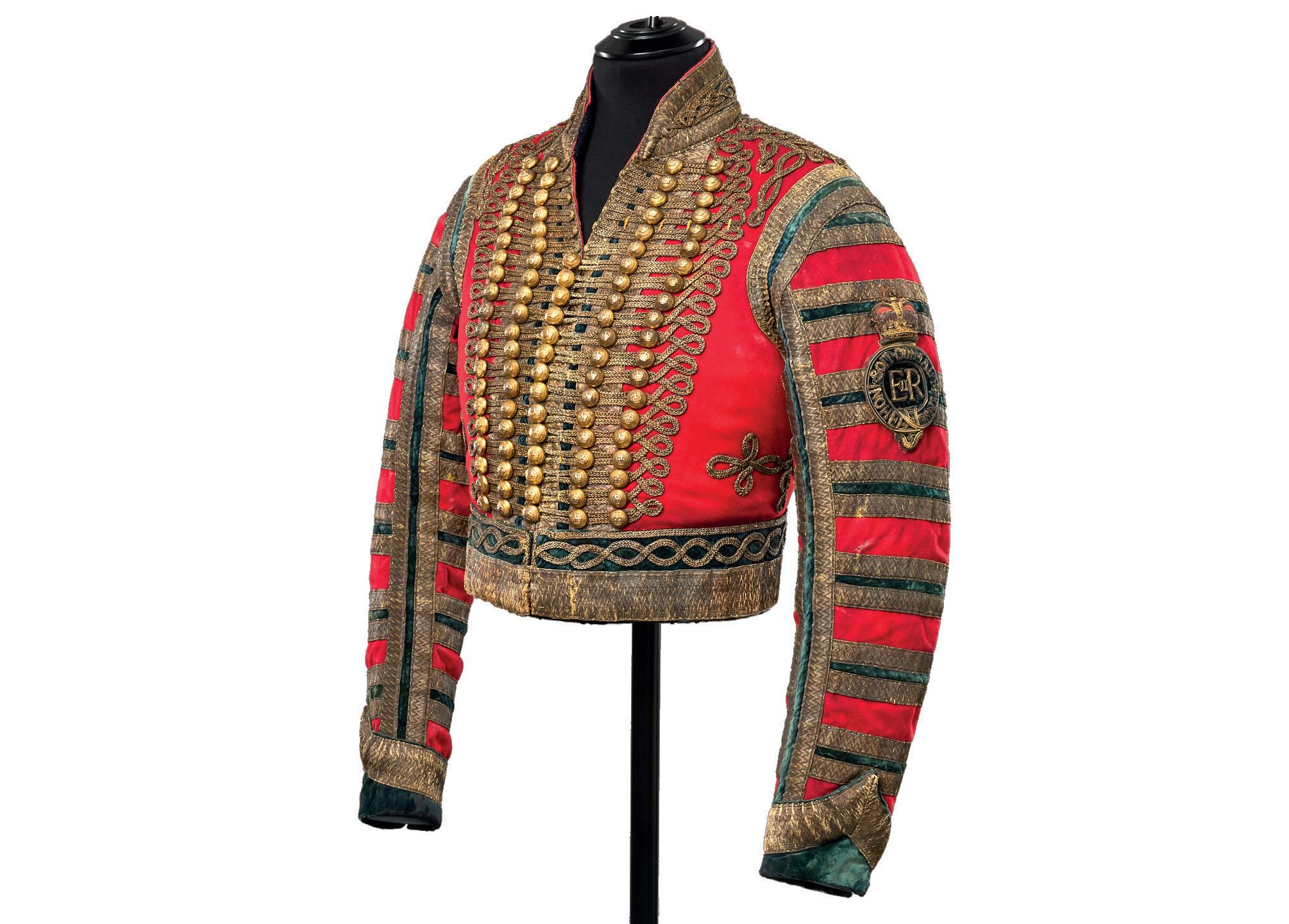

A group of young Londoners recruited from local community partners have contributed to the exhibition from the outset, adding a unique vibe with their personal creative responses. The results are astonishing.
Over the past year, Historic Royal Palaces has been working with 25 talented Young Producers aged 14 to 17, recruited from three of our local community partners, City Lions, Nova New Opportunities and The Harrow
Working with so many industry professionals was such an inspiring experience!
Young Producer (City Lions)
Club, who all have expertise in youth engagement and who share our desire to support young people to build skills and confidence. The Young Producers have influenced the exhibition right from its concept stages, taking part in a series of workshops highlighting the stories they find most interesting or relevant. As well as giving the exhibition designers a steer for the look of the exhibition, they identified areas where they could add their personal touches through creative responses. The group split into three teams to work on projects around storytelling, fashion and music that you will see featured in the exhibition, so look out for these intriguing additions along the way.
The storytelling group worked closely with Interpretation Manager Cat Berni and Collections Curator Matthew Storey on the interpretation of the objects. Each young person chose an item they found particularly inspiring and developed a creative way of telling its story from their unique perspective. Seven of these treatments, ranging from a film setting the scene for a coronation street party to an interactive game, will be dotted throughout the exhibition.
The fashion group collaborated with fashion consultancy Avis Charles Associates to create original responses to the Royal Ceremonial Dress Collection. Taking inspiration from the historical pieces, their designs add an individual and contemporary twist. These include unexpected fabrics, international cultural influences and powerful contemporary messages. Each outfit was featured in the Young Producers showcase, a fashion show at the palace in February. Eight of the outfits will be on display in the exhibition in the grand finale, which demonstrates how the dress collection is a source of inspiration today.
The music group worked with producer J from SOUL Media to develop four original tracks exploring the themes of the exhibition. The group decided to use classical music as a base to represent the formal rules of court dress, then added a modern spin by incorporating elements from contemporary genres such as pop, rap and R&B. Their compositions sound tracked the Young Producers fashion show and was also arranged by the exhibition composer Charlotte Harding to inspire the second half of the exhibition soundscape.
Our Community Partnerships Team is committed to supporting young people to grow their interest and build confidence in accessing culture.
‘Dress Codes’ provided a chance for us to collaborate closely with young people to inform our future skills-based programme that will help build cultural capital and well-being for local young people who do not see the heritage or culture sector as a place for them. Just as in ‘Dress Codes’, we believe that through this work, young people will bring fresh perspectives to our palaces, encouraging them to be our audience and colleagues for the future.

‘Working with the Young Producers has really changed our perspectives as creative professionals’, said Cat Berni. ‘This project started with trying to engage the youth in heritage and break down boundaries, but instead, we as professionals have had our ideas challenged and minds opened, making us think more creatively and explore new ways of thinking. I think we have learnt more from the Young Producers than they have from us!’
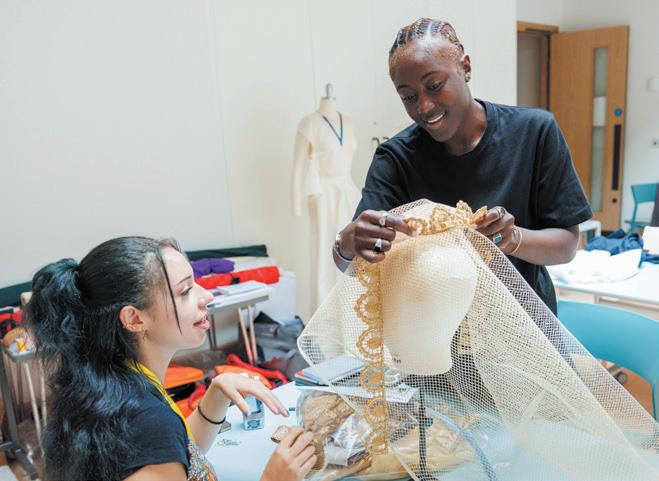
The Community Partnerships team works with people who are underrepresented in our visitor profile and experience multiple barriers to accessing the palaces, which may include financial, geographical, cultural, physical or related to health and well-being. We support young people to access opportunities in heritage and work with partner organisations with the aim of empowering young people to realise their full potential through skills building, creative projects, career-based programmes and volunteering.
THANK YOU
Your continued support as a member enables us to work with and inspire a new generation of young people contributing to the arts and to fashion industries.
A team of six Textile Conservators at Historic Royal Palaces spent nearly 3,000 hours over six months conserving and mounting the objects for the ‘Dress Codes’ exhibition and ensuring they are safe for display. Here are some of their favourites.
Worked on by Katica Laza
I discovered that Princess Elizabeth’s dress has a number of repairs and alterations, suggesting it was adapted to accommodate her as she grew. It may have even been passed down to her younger sister Margaret, emphasising the mentality to make things last. The sheer fabric on the Peter Pan collars and the cuffs was very worn, so I used a similar fabric to support weak areas, securing it with fine stitching to make them safe for display.
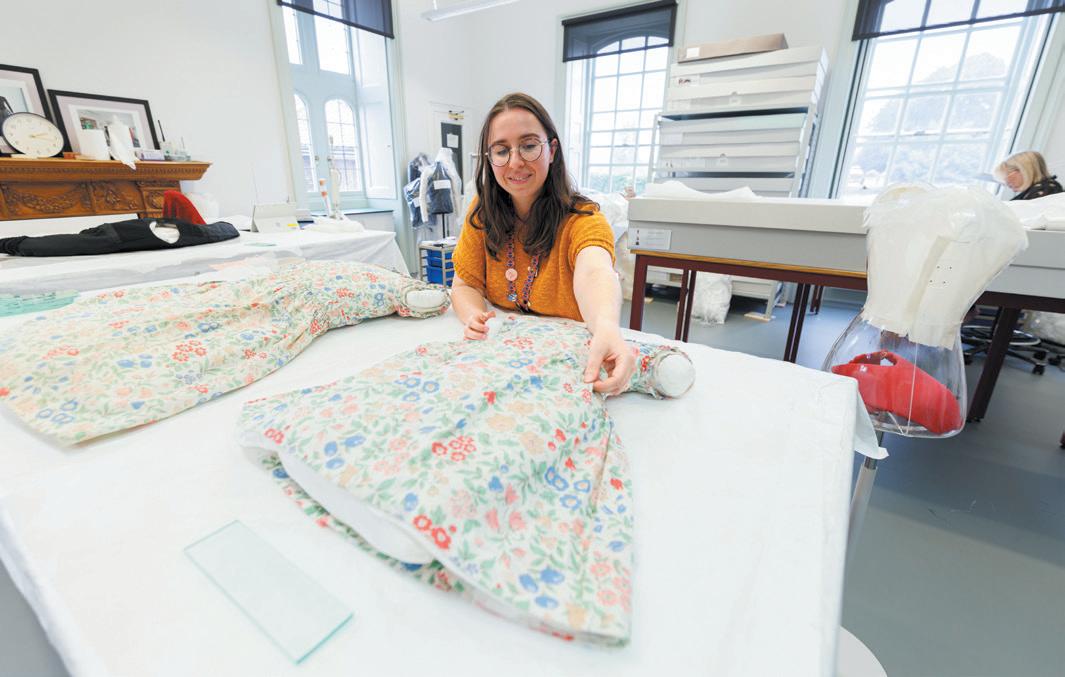
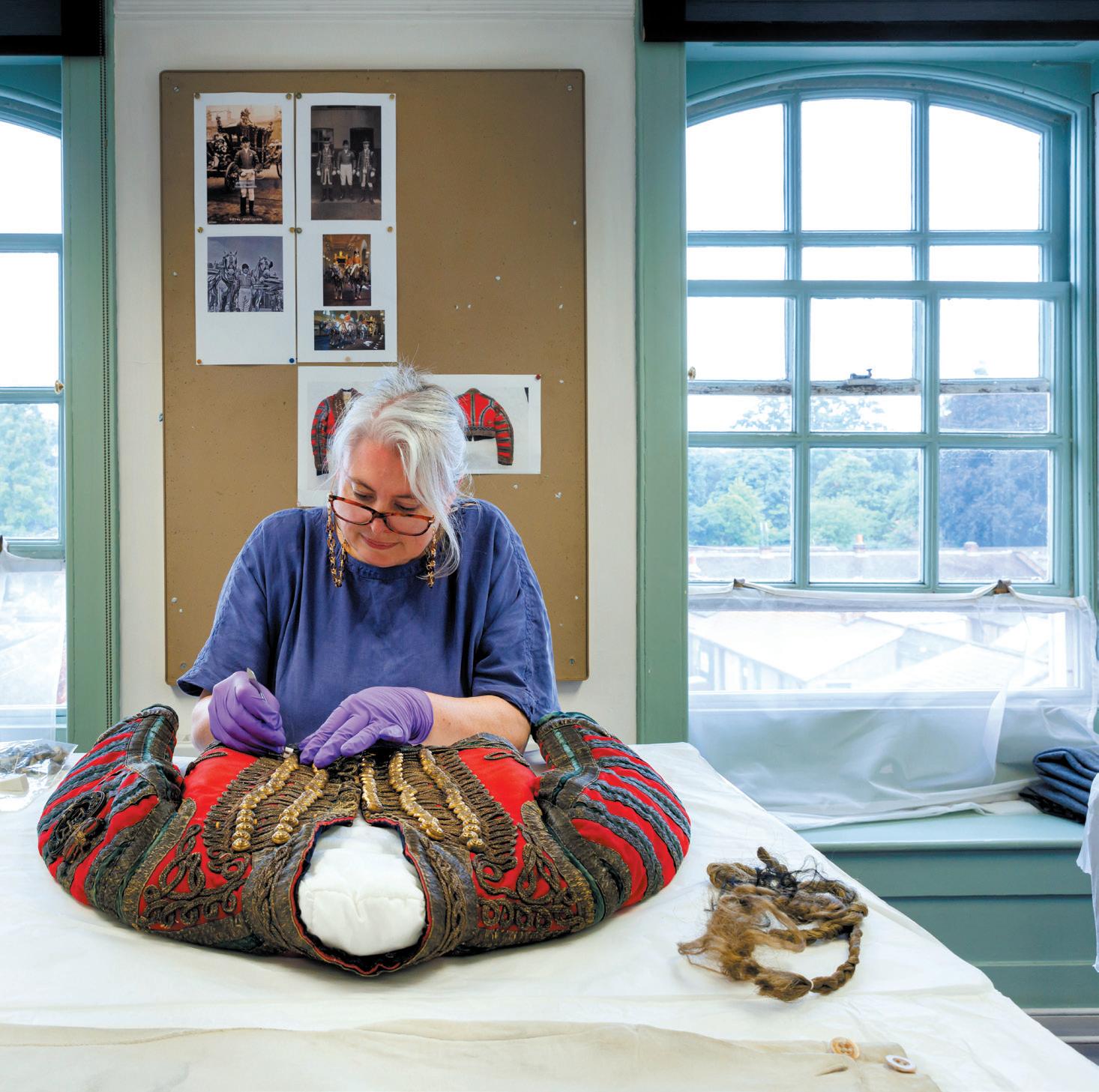
Worked on by Anne-Marie Britton
This red and gold postillion’s jacket was probably worn at coronations or state occasions from 1902 until at least the 1950s. The jacket has been worn by several different people over the years; their names handwritten on the lining. It was fascinating to see the repairs these wearers had carried out to maintain the jacket – and important for me to retain them as part of the conservation treatment.
DUKE OF WINDSOR, WELSH GUARDS UNIFORM c1930
Worked on by Rachele Di Gioia
This tunic was probably worn by the Duke of Windsor (King Edward VIII), when he was a Colonel of the Welsh Guards from 1919 to 1936. A unique design feature of the uniform is the leek motif, the national emblem of Wales, which appears on each gilded button and is embroidered in gold thread on the collar. The conservation of the tunic was carried out in collaboration with our Heritage Science Team with the metal threads being cleaned under magnification.

COURT UNIFORM EARLY 20TH CENTURY
As I am Japanese, it was thrilling to discover its history.
SEE FOR FREE ‘Dress Codes’ opens on 13 March and will run until 30 November 2025. Members’ preview day is 12 March (preview pre-booking required).

Worked on by Kaori Motaung
This uniform is an intriguing object with Japanese symbols and designs created using European goldwork techniques. As I am Japanese, it was thrilling to discover its history and learn more about the influence of Western culture on Japanese dress in this period. My conservation priority was to stabilise the fragile goldwork and preserve as much of the original materials and construction as possible.




As we mark 80 years since Victory in Europe (VE) Day, Anthony Musson Head of Research, and Minette Butler Assistant Curator, reflect on how our palaces survived the conflict.
To early 20th-century visitors, the Tower of London’s role as a fortress and prison may have seemed like a thing of the past, but its symbolic status and security advantages enabled it to reprise this role during the Second World War. In late 1939, the Tower was used to house prisoners of war for interrogation before they were sent to prison camps. Rudolf Hess, Hitler’s deputy, who had unexpectedly been captured after piloting to Scotland, was the last state prisoner to be held at the Tower. Hess, whose mission remains mysterious to this day, spent four days in the comfortable surroundings of the King’s House before being transferred to Mytchett Place, Surrey, where he spent 13 months as a prisoner. The Tower also witnessed its last execution, on 15 August 1941, when Joseph Jakobs, who had been found guilty of espionage, was shot by a firing squad in the Miniature Rifle Range.
The Tower itself suffered some bomb damage, including the destruction of the 19th-century Main Guard and part of the Old Hospital Block. ‘By dawn, our poor old Tower looked in a pitiful plight, for hardly a portion of it had


escaped the fury of the night’, recalled one Yeoman Warder after an air raid in 1940. ‘Most of its windows had been blown out, or were hanging awry. Glass was strewn everywhere. Doors were off their hinges, ceilings down, and blackout curtains torn to ribbons.’
Not surprisingly, given its renewed military role, the Tower was closed to the public for the duration of the war, although the Tower community, including the Yeoman Warders and their wives and children remained, issued with gas masks and steel helmets and fearing for their lives. Eventually the Yeoman Warders were advised to evacuate their families to the countryside. Also evacuated were some of the Tower’s treasures, including the historic arms and armour (half of which was stored in Knightsbridge tube station; the other half at Hall Barn, a country house in Beaconsfield) and the Crown Jewels (see box). Even the Yeoman Warders’ uniforms were sent to a safe store. Finally, the Tower Moat became an allotment where residents embraced the Dig for Victory campaign.
Visit the Tower of London between 05 May and 11 November to see a very special display of some of the 2014 ceramic poppies, returning to the Tower to mark the 80th anniversary of the end of the Second World War.
Since Whitehall was the centre of Allied operations and an obvious target for German bombs, the safety of the Rubens ceiling paintings in the Banqueting House was of great concern.
Due to their size and the difficulty of removing them, the original plan had been to leave them in situ with some protection, but in late 1940 as bombing intensified a decision was made to take them down. However, the paintings had previously been mounted on plywood in the early 20th century and were too big to take out through the building’s windows, so there was no choice except to saw the priceless canvases into smaller sections to allow them to be removed. They were taken to join the Tower treasures at Hall Barn. In 1945, the paintings were moved to Kensington Palace where they were restored in the Orangery before being reinstalled in the Banqueting House in 1950.
Not surprisingly, Kensington Palace was also affected by its central position in the capital and bomb damage in 1940 left the State Apartments badly affected, particularly the Queen’s Apartments.
At the outbreak of the war, it had been suggested that some of the Crown Jewels should be sent to Canada for safe keeping but the Prime Minister, Winston Churchill refused. Instead, they were moved, in great secrecy, to a vault under the office of the Royal Librarian at Windsor Castle. A journalist visiting the empty Jewel House in April 1940 remarked that it looked like ‘the scene of a robbery’. At Windsor, the most important stones were removed from the regalia, wrapped in cotton wool and placed inside a biscuit tin. The Royal Librarian who carried out the work at the King’s request remarked ‘this tin is easily portable; betrays no indication of its contents; is easily disposed of at the shortest notice –even buried or sunk. And it contains the nucleus for a new set of Crown Jewels if the worst should come to the worst.’ Thankfully, the Crown Jewels remained safely hidden away at Windsor for the duration of the war and were returned to the Tower in October 1947.
Despite this, in true wartime spirit the palace remained open to visitors, until 1944 when several flying bombs fell nearby, smashing nearly all of the remaining windows.
At the outbreak of the Second World War, the palace was home to a community of ageing members of the Royal Family including Queen Victoria’s two surviving daughters, Princess Beatrice and Princess Louise. While Beatrice was evacuated to a house in the country, her 91-year-old sister refused to leave the palace. A suite of concrete rooms in her apartment were fitted up as an air-raid shelter, though in the event they were not required. Princess Louise died just three months after war had been declared.

Though advised to evacuate, many grace-and-favour residents and their staff remained in their apartments at Hampton Court Palace during the Second World War, and the building stayed open as a welcome wartime diversion. An air raid shelter was erected near the Barrack Block, where the Ticket Office is now situated, principally for Office of Works staff, and when warnings sounded many residents took cover beneath stairs and in cellars.
Pupils from the Infants’ School sought refuge in the basement of the Georgian House along Tennis Court Lane.
Fire watching was essential and by 1943, authorities had secured 67 recruits to support the palace fire brigade, 11 of whom were women, including cooks and maids. These firewatchers took turns enduring long, cold nights at six points across the roof, ready to extinguish flames before they spread. Residents and warders also volunteered to staff first aid and gas cleansing stations set up onsite.
In 1942, Camp Griffiss was set up in nearby Bushy Park, which became the headquarters of the US Eighth Air Force and later Supreme Headquarters Allied Expeditionary Force under General Eisenhower. The residents enjoyed hosting their trans-Atlantic allies and in 1944, some American soldiers were invited to dinner at the palace, shortly before departing for D-Day.
Peace came in 1945 – a great relief to the palace and the country at large. One year later Hampton Court was lit up with floodlights to celebrate the anniversary of VE Day, illuminating the palace and the nearby Thames in a triumphant glow.
In the mid-18th century, when Hampton Court was abandoned as a royal residence, the palace was divided up into a series of apartments allocated by the ‘grace-and-favour’ of the sovereign to those deserving of assistance. The residents were often widows whose husbands had served with distinction in military service but had fallen on hard times. This practice lasted almost to the close of the 20th century.

Hampton Court was initially thought to be an unlikely target for enemy aircraft owing to its location away from central London, but this soon changed following a raid on 26 September 1940. Hundreds of incendiary bombs fell on the palace roof, starting ten separate fires along the East Front, Fountain Court and Tennis Court Lane. Thankfully no one was seriously hurt, but following this attack, the palace’s moveable works of art were hurriedly evacuated to the National Library of Wales in Aberystwyth and, as at Kensington Palace, copies were made to record the murals in the State Apartments. Women were recruited to replace the male gardeners who had joined the services and prisoners of war (probably from the camp based in Richmond) were brought in to assist with thinning the Great Vine. Grapes from the vine were sent out by one of the residents to wounded soldiers at various hospitals. It was a rather different story at Hillsborough Castle, although in the early years of the war the threat of an invasion in the province was treated seriously. In 1939, the valuable 18thcentury Richhill Gates (formerly gracing Richhill Castle in County Armagh), which had been installed in 1936, were removed from the forecourt and security was increased at the castle. With the risk of invasion diminishing, not only were the gates reinstated in 1943, but the castle played host to the First Lady of the United States of America, Eleanor Roosevelt, who visited Hillsborough in 1942 on her tour of American troops stationed in Northern Ireland.
Kew played a rather more dynamic role in the war effort. Fire watchers were stationed in Kew Palace in case incendiaries fell on the building, while the botanical garden’s valuable books and irreplaceable plant specimens were sent to safer areas of the country. The Great Pagoda, however, was actively deployed in unusual scientific experiments to develop smoke bombs, which were intended to screen the Normandy and Sicily landings. Against all modern principles of building conservation, permission was granted for the Royal Aircraft Establishment, based at Farnborough, to core out the centre of the ten-storey high pagoda and drop smoke bombs nearly 50m down through the building!
With a cohort of women gardeners drafted in, Kew Gardens remained open throughout the war and played a vital role in promoting the Dig for Victory campaign to encourage people to grow food and help feed the nation. A model allotment was constructed in the gardens to Ministry of Agriculture specifications and used to demonstrate the cultivation of vegetables to visitors. Some of the lawns were dug up and used as vegetable plots or given to local residents as allotments.

Algernon Charles Swinburne from Atalanta in Calydon, 1865
As the palace gardens start to erupt with spring colour, we asked some of our gardeners to tell us about their most-loved spring blooms – and where you can see them at their best.
Don’t miss the annual, award-winning Tulip Festival at Hampton Court Palace this spring, 11 April to 05 May (subject to weather).
At Hillsborough Castle and Gardens, the Spring Spectacular runs 15 March to 05 May (subject to weather).
Hampton Court Palace
Join one of our knowledgeable volunteers on a tour of these beautiful, inspiring gardens this spring. Explore the Wilderness, Tiltyard, Kitchen Garden and Nursery and discover more about the history of these much-loved spaces. Members go free; pre-booking required.
Hillsborough Castle and Gardens
With ornamental grounds, peaceful woodland and meandering waterways, the gardens surrounding Hillsborough Castle are a joy to explore. Discover the grounds on a seasonal tour with one of our expert gardeners. Members go free; pre-booking required.

Garden Co-ordinator, Hillsborough Castle and Gardens
Fritillaria meleagris –‘Snake’s head fritillary’ (below)
Gardener, South Front Team, Hampton Court Palace
Eranthis hyemalis –‘Winter Aconite’ (left)
Of all the spring flowers, Eranthis hyemalis, a tuberous perennial in the Ranunculaceae family, is my favourite.
Native to European woodlands, it is ideal for planting under deciduous trees and shrubs.
Garden Volunteer, Hampton Court Palace
Allium (far left)
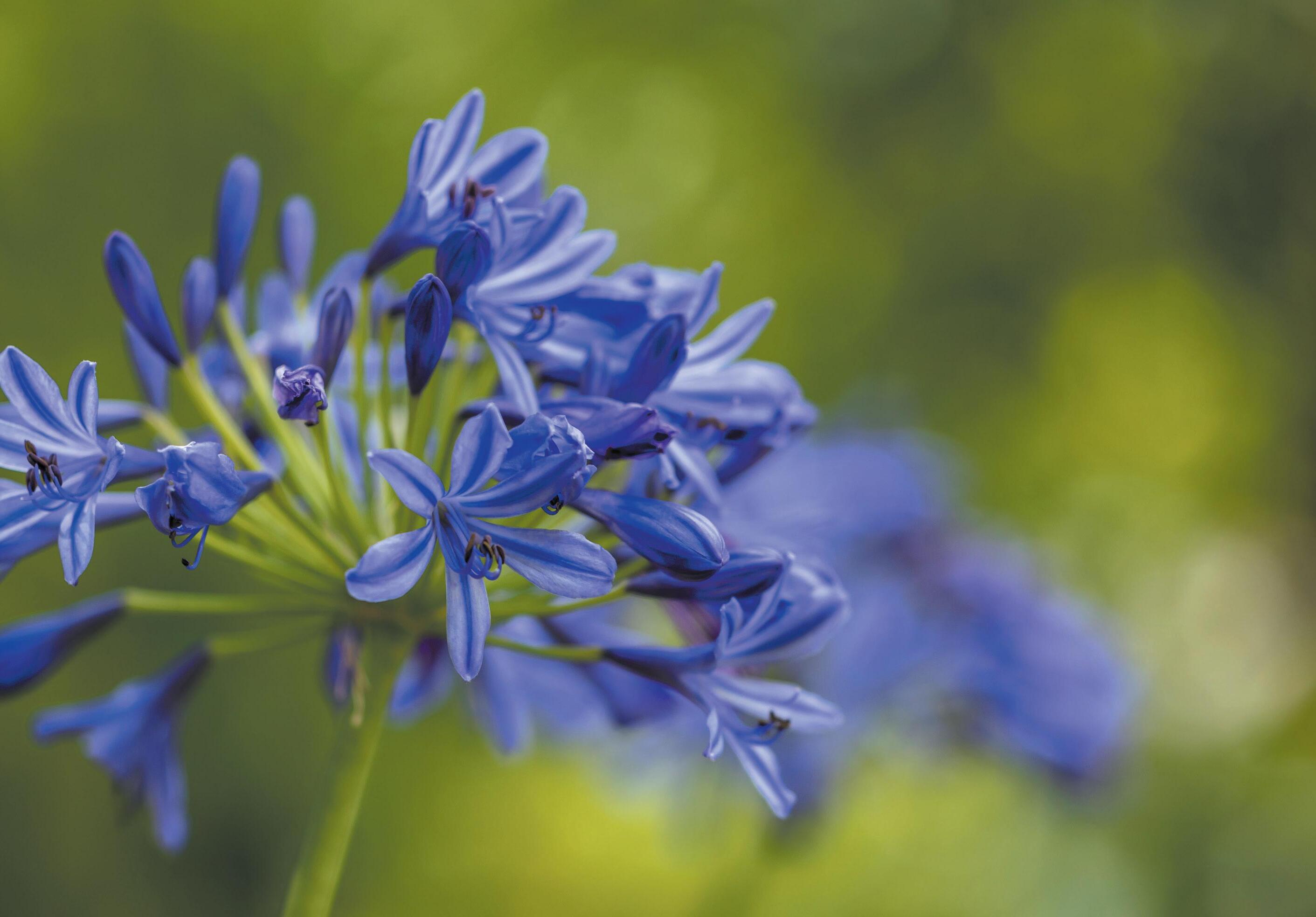
The author and garden designer Vita Sackville West is said to have described the Fritillaria meleagris as ‘a sinister little flower, in the mournful colours of decay’ but I think there’s something rather charming about this perennial bulb. It is a very delicate looking plant, its nodding flower heads held up on fine stems that have a few narrow leaves and it naturalises well in damp grass meadows. The bell-shaped flowers are unmistakeable: usually purple with a chequer board pattern that is unusual in nature. Occasionally the flowers can also be pure white.
Tolerant of partial shade, the aconite brightens gloomy areas of any garden. Its leaf-like bracts appear in late winter and form a collar beneath golden yellow flowers, similar in appearance to buttercups. It spreads quickly, and over time the flowers form an impressive yellow carpet. Look out for these little beauties behind the Pond Garden at Hampton Court, underneath the pleached lime trees.
The aconite is a ‘spring ephemeral’ meaning it has a short life cycle. But despite its brief flowering period, its understated elegance and cheery presence heralds the promise of spring around the corner and brighter days ahead.
Planted as a humble bulb in autumn this eye-catching plant bursts into spring like a spectacular floral firework. Visible from early May and lasting for weeks on end these mostly purple-coloured beauties can be seen dotted in groups or woven around the borders in the Kitchen Garden at Hampton Court Palace and throughout the gardens, displayed in pots to equally stunning effect.
Alliums are easy to grow and many species self-seed. They make supreme cut flowers or they can be left to dry and displayed as sculptural seed heads. Best of all, bees love them too!

At Hillsborough they thrive in the meadow just below the Quaker Burial Ground where you will find hundreds of them flowering in late April into May. You can buy them in flower in the spring or as bulbs in the autumn. Established bulbs will produce angled seed capsules with three segments: the seed can be harvested in late summer and can be scattered in damp areas, but you’ll need to be patient, as they take two to three years to flower. SAVE MORE
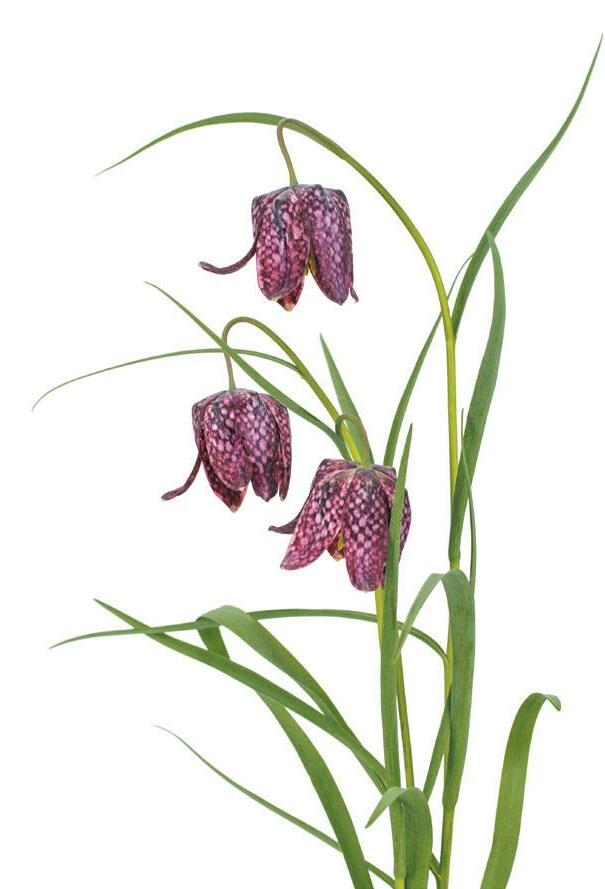

Historic Royal Palaces has been working in partnership with Welbeck Publishing and author Felicity Day on a fascinating new book exploring how plants and flowers have been used by monarchs throughout history RoyalBlooms:TheCrownand Plants–AVeryNobleHistory will be published in June 2025. Look out for it in our gift shops, along with our other gardening related titles, and receive 10% off when you purchase instore with your membership card or use code MEMBER25 online.
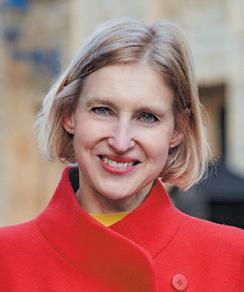
Historic Royal Palaces’ Chief Historian, Tracy Borman OBE reveals the good, the bad and the downright horrid!
Royal motherhood is not always easy. For centuries, tradition dictated that at the tender age of three months, a prince or princess should be established in their own household, separate from their parents. Their mothers were forbidden from breastfeeding because it was believed to hinder conception –an important consideration, given that a royal wife’s primary duty was to fill the nursery with heirs and spares. As a result, many a royal infant grew up barely knowing either of their parents.
But history also provides some striking examples of royal women who, against the odds, managed to forge a strong bond with their offspring.
One of the lesser known but most formidable of them was Matilda of Flanders, wife of William the Conqueror. She helped establish the new Norman dynasty by giving birth to at least nine children. But it was her firstborn son Robert who was the apple of her eye, although his father had given him the scornful nickname ‘Curthose’ (meaning ‘short trousers’) and refused to cede any authority to him as heir. In 1077, Robert’s simmering resentment boiled over and he took up arms against his father. More shocking, though, was the discovery that his rebellion had been supported by his doting mother Matilda!

Fast forward five centuries and we find another unbreakable mother-child bond. Anne Boleyn was not an obviously maternal woman. Her forthright, ambitious and occasionally vicious nature was more suited to the political arena than the royal nursery. But the birth of her daughter Elizabeth in 1533 seemed to change all of that. From the beginning, Anne lavished affection upon her new-born daughter and could hardly bear to be apart from her.
‘Day and night she would not let this daughter of hers out of her sight’, observed one scandalised chronicler. ‘Whenever the Queen came out in the royal palace where the canopy was, she had a cushion placed underneath for her child to sit upon.’

Explore the stories of some of the women who have influenced the course of history at hrp.org. uk/womenshistory-at-thepalaces
Below
Tragically, Elizabeth was less than 3 years old when Anne was executed so it’s unlikely she retained memories of her mother. But she grew up to revere Anne’s memory and celebrate her achievements. She was encouraged in this by her last stepmother, Katherine Parr, who became Henry VIII’s sixth queen in 1543 and stepmother to his three children.
While Henry doted on his ‘precious jewel’ Edward from his short marriage to Jane Seymour, he had had both Mary (his daughter with Catherine of Aragon) and Elizabeth declared illegitimate. But thanks to Katherine’s benign influence, they were welcomed back to court and even restored to the line of succession in 1544.
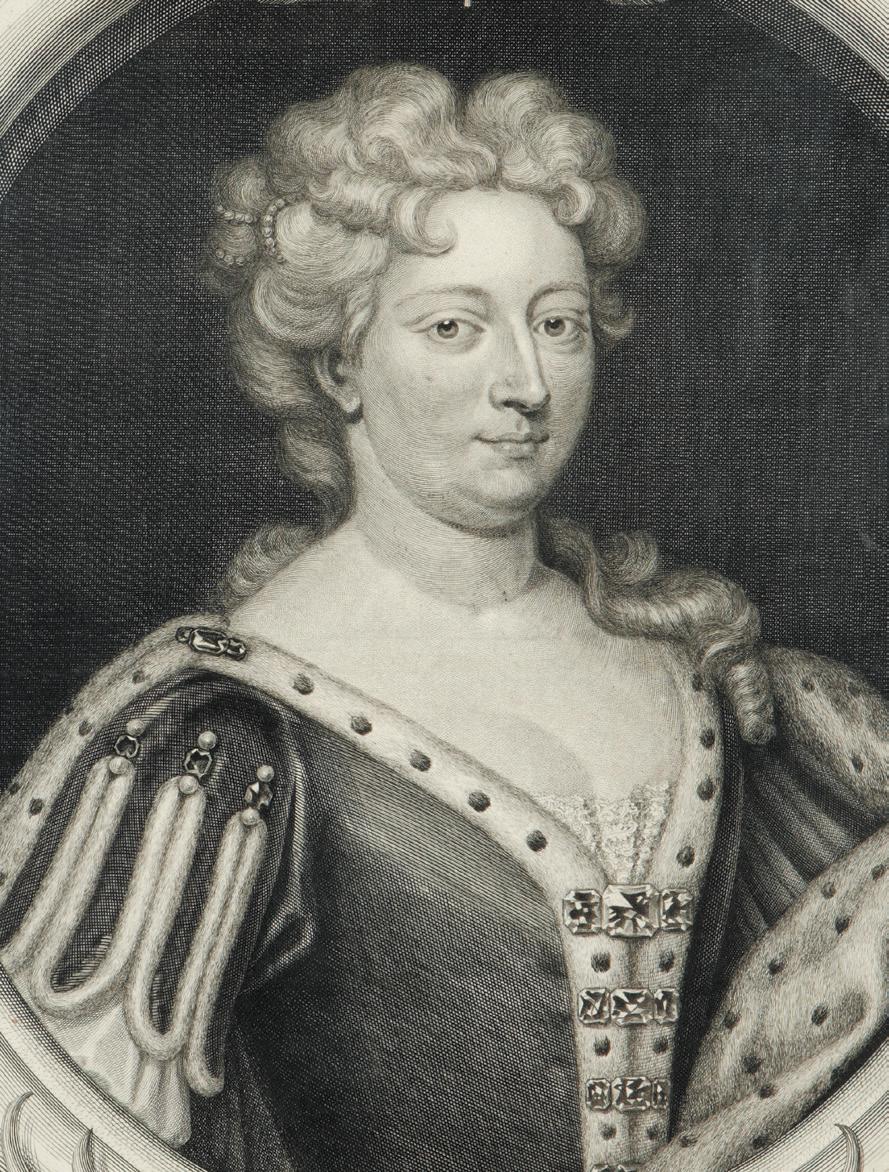
Not all royal mothers were such peacemakers. In the Georgian equivalent of Home Alone, when Caroline of Ansbach, consort to the future King George II, set sail for England upon her father-in-law’s accession in 1714, she left her young son behind in Hanover. This was no mistake, however, and she let poor Frederick rot there for 13 years until finally agreeing that he could join her and his father in England. It wasn’t exactly a touching reunion. Caroline was heard to remark that her eldest son made her want to ‘vomit’.
Unlike Frederick’s, the future Queen Victoria’s childhood was the very definition of being wrapped in cotton wool. Victoria was born at Kensington Palace in 1819. Described as ‘plump as a partridge’ and a ‘pocket Hercules’ by her doting father, who died soon after her birth, she was raised by her mother, the Duchess of Kent.
Although Victoria was surrounded by every conceivable luxury, when it became clear that she was destined for the throne her freedom was severely restricted by the so-called ‘Kensington System’, introduced by her mother and her despised favourite Sir John Conroy. This included being constantly accompanied and always having to hold someone’s hand when walking downstairs. It is perhaps not surprising that the first thing Victoria did upon becoming queen in 1837 was to ask for an hour alone ...

Queen Victoria didn’t always live up to her publicly promoted model of motherhood.
Victoria went on to have nine children of her own. She enjoyed many happy family holidays at Osborne House on the Isle of Wight, where her husband Albert built a life-sized doll’s house (Swiss Cottage) for the children to play in, as well as little allotments where they could grow and sell their own fruit and vegetables. But Victoria didn’t always live up to her publicly promoted model of motherhood. She despised her profligate son and heir Bertie and could not bear to think of him succeeding her. ‘I try to shut my eyes to that terrible moment’, she shuddered.
Victoria was much closer to her daughters … sometimes a bit too close. By the time her beloved Albert died, their children had started to fly the nest. But the widowed Queen was determined that her youngest, Beatrice, would never leave.
Only after a great deal of persuasion did she agree that her daughter could marry Prince Henry of Battenberg, on condition that the newlyweds live with her. Victoria even turned up in the middle of their honeymoon!


Temporary scaffolding around the palaces, or visitor route diversions, are sometimes unavoidable during vital planned maintenance projects. But what exactly is going on, and why? Surveyor of the Fabric, Patricia Leš explains the essential work of her team.
As you would expect, our six wonderful palaces, having survived several centuries, do need constant care and attention. A significant percentage of the funds raised by our charity go towards maintaining, conserving, restoring and presenting the buildings and grounds, and there are teams of dedicated individuals busily working together on delivering a wide range of projects every year.
The Surveyor of the Fabric and Projects teams are a group of building professionals responsible for the delivery of the Planned Maintenance (building conservation) programme and the Major Projects (redevelopment) programme of works – over 150 projects at various stages of development at any one time.s
MORE
Often large building conservation projects reveal secrets about the birth of the palaces. You can find out more about our astonishing archaeological discoveries online at hrp.org.uk
Previous page Project Manager Bethany Wilkinson standing in the lodgings created for the young Prince Edward, son of Henry VIII. The bay window is currently undergoing essential repairs.
Great Gatehouse project includes repairs to the large oriel window, coat of arms and the replacement of lead roof coverings.
Our 12 Project Managers are architects and building surveyors with specialist training and experience in historic buildings, who work in consultation with Historic Royal Palaces’ Buildings Curators and the Historic England Inspectorate. They also collaborate with the Preventative Conservators, Maintenance Surveyors and many other internal stakeholders. The Project Managers are supported by a team of six Quantity Surveyors and eight Project Support Officers, with technical and design advice provided by our in-house Senior Conservation Architect.
Every project requires a team of staff experts and external consultant specialists, including architects, engineers and archaeologists. Often other technical advisors are commissioned to analyse aspects of the building fabric to help us understand the history of its development and to inform appropriate repairs. This careful design process may take over a year before we see a scaffold built on site, and we can finally hand over to the specialist conservation craftspeople, who undertake traditional repairs using traditional materials. We make every effort to ensure that this skilled work can be seen in action by visitors.
We prioritise our building conservation projects using the results of our ‘State of the Estate Survey’. Every ten years (the last one was in 2019) our team undertakes a detailed inspection of our six sites.
The whole gatehouse has been beset by structural issues over the centuries.
Condition data is collected on roofs, walls, windows and rainwater goods, as well as railings, gates, garden walls and paths. This allows us to compare the current condition of individual elements with previous survey results – identifying any gradual (or accelerated) deterioration, and helping us to record our progress on the care and conservation of the palaces. A three-year rolling programme and ten-year forward programme prioritise urgent projects by building condition and significance within a defined annual budget – the funding for which is dependent on our members and visitors.
Progress on our building conservation works slowed over COVID (vital on-going works during lockdown were assisted in part by Cultural Heritage Recovery Grant funding) as the palace doors closed to our visitors. Happily, things have improved and there are a number of exciting projects underway including the repair of the ornate brick chimneys at Hampton Court Palace, as well as roof and masonry repairs to the Great Gatehouse. At Kensington Palace the conservation of the east façade completes in summer, and at the Tower of London the structural stone repairs to the Middle Tower and Moat causeway will ensure the entrance is conserved for future generations to enjoy. Let’s take a look at some of these projects in a little more detail …

Project Manager: Rob Umney
Despite being one of the most recognisable features of Hampton Court Palace, the Great Gatehouse on the West Front has caused centuries of concern for palace custodians since it was built between 1516 and 1522. Henry VIII wasted little time in stamping his mark on the then five-storey-high entrance after Cardinal Wolsey’s death in 1530, adding his coat of arms, carved in stone, on each side of the gatehouse. However, by 1770-2 these stone tablets had deteriorated so badly that copies were made to replace the originals, and these copies were replaced once more by the Victorians and then again in the mid-20th century.
In fact, records suggest that the whole gatehouse has been beset by structural issues over the centuries, with a bricklayer ‘making upp viii newe chymneye shaftes that were blowen down in anno 1588’, followed by dozens of subsequent repairs until the gatehouse was partially taken down in 1771-3 and rebuilt to an altered design. This radical change, involved removing the two upper storeys and the cupolas with their pinnacles and vanes to lessen the weight of the building, and to reduce the expense of the constant work it required. Despite this, by 1837 the building had to be shored-up again for underpinning repairs. The next major programme of restoration took place in 1880, reconstructing the fan vault beneath the gatehouse lost in the 1770s re-build, and reinstating Henry VIII’s linenfold gates, which, astonishingly, had been used as a floor in a workshop!
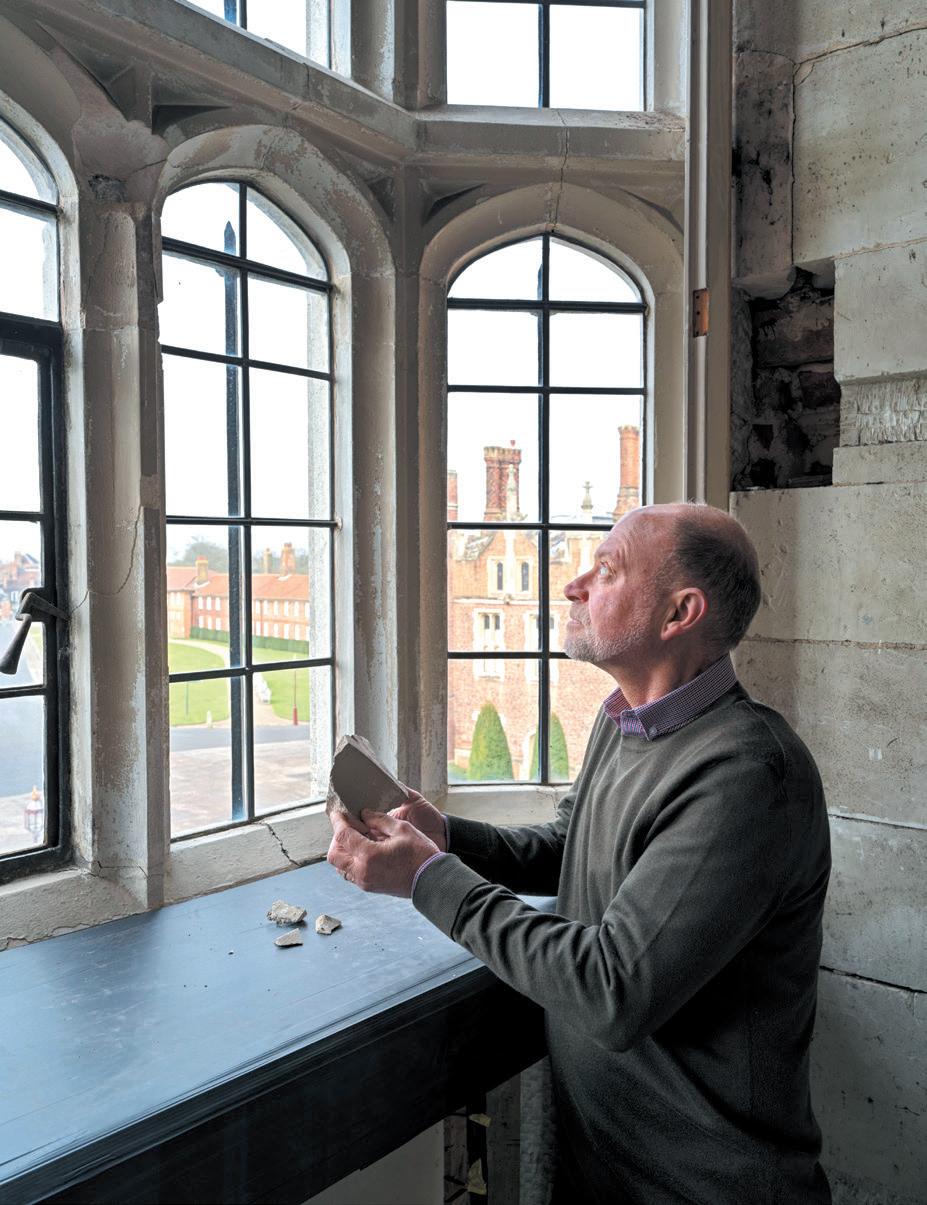

As our Senior Conservation Architect Andrew Harris explains, ‘Climate change and increasingly frequent heavy rainstorms place our roofs and rainwater drainage under an increasing burden. Much of the historic masonry of the Great Gatehouse is held together with iron staples, which if exposed to water can rust and expand, and affect vulnerable features such as the large oriel window. Our work will focus on preparing the building to withstand the next hundred years or so.’
THANK YOU
Members’ continued support plays a vital role in enabling us to fund these large projects and the ongoing building conservation work these wonderful palaces require.
Now it’s our turn to conserve this iconic part of the palace, with a programme of work running between 2025 and 2026.
The project includes stone masonry repairs to the coat of arms and the oriel window, brick repairs and repointing, and the replacement of lead roof coverings. And while the scaffold temporarily obscures the famous view of the palace (from July 2025), the glorious gatehouse will eventually emerge, strengthened and protected after this essential conservation work, to impress and delight visitors for centuries to come.


Project Manager: Bethany Wilkinson
The Hampton Court Palace kitchens are a vast complex of rooms, passages, halls, courtyards and offices, arranged to accommodate the ‘progress’ of food – from delivery as raw ingredients, through preparation and cooking, and finally to serving in the Great Hall.
The decorative ‘Tudor’ chimneys are actually Victorian in origin, built in around 1882.
Cardinal Wolsey and Henry VIII are mainly responsible for the Great Kitchen, with work done in phases between 1514 and 1530. However, the decorative ‘Tudor’ chimneys are actually Victorian in origin, built in around 1882, with elaborate gothic styles replacing the plainer shafts.
The chimney repairs are one of two major building conservation projects underway in 2025 in Tennis Court Lane, which runs along the north of the palace (not accessible to visitors). We will also be carrying out repairs to the bay window of the lodgings provided for the young Prince Edward, son of Henry VIII, at the east end of the lane.
We started the conservation of the Tudor Kitchens in 2023 with the repair of the castellated brick parapets. The scaffold access for that project gave us the chance to check the condition of two of the decorative chimney stacks servicing fireplaces in the kitchens below, and we discovered a lot of work was needed!
Last year, a triple chimney stack and a quadruple stack were carefully dismantled, and the cutting and rubbing of replacement bricks began in the palace’s brick workshop in readiness for the chimneys’ reconstruction in 2025.
Further work is planned in 2027 to replace the pitched roof of the Tudor Kitchens. The roof was replaced in the 19th century, repaired in 1946 following air raid damage, and repaired again in 1978. Now, weathered and broken, the tiles are in need of replacement.
While this work will, inevitably, cause some disruption for members and visitors, we hope you will enjoy learning more about the story of traditional craft skills, and in particular the beautiful handmade bricks used to create Hampton Court’s 241 decorative chimneys, no two alike.
Project Manager: Rose Blezard
Built between 1275 and 1281, the Middle Tower is the first of two great gatehouses, connected by a stone causeway, through which visitors pass when entering the Tower of London. Both the tower and the causeway were important parts of Edward I’s expansion of the Tower’s defences, as he sought to transform it from a castle into an impregnable fortress.
Both structures have been repaired in the past, but naturally the stone has continued to weather and decay. Annual monitoring of masonry cracking has also revealed a small increase in the movement of the Middle Tower over the past decade, so we need to undertake repairs to the lead roofs and internal timber structure. Damage to the causeway’s pre-Victorian stone facings has been made worse by the corrosion of metal cramps installed in the 19th century. Repairs to the causeway will involve partial dismantling and reconstruction of the walls and careful conservation of the remaining masonry. During the project, visitors will access the Tower by the Middle Drawbridge. As you walk along the Wharf to get there, you will be able to see the stonemasons and conservators hard at work in the South Moat, recording and repairing the stone of the causeway.



Known affectionately as ‘May’ from an early age, she is more familiar to us as Queen Mary, wife of King George V (1910-36). Her parents, the Duke and Duchess of Teck, were granted apartments at Kensington Palace by Queen Victoria and shortly after moving in in 1867 their first daughter, Mary, was born. Queen Victoria visited the baby, recording in her journal that she was ‘a very fine child, with quantities of hair – brushed up into a curl on the top of its head! – and very pretty features’. Over the next seven years, May would be joined by three brothers, all born at Kensington Palace. The children’s nursery was probably located in the King’s Gallery (which had been partitioned into several rooms by Queen Victoria’s mother, the Duchess of Kent, in the 1830s). One of the Duchess of Teck’s ladies wrote ‘It was quaint and pretty to see the little ones in their cots with allegorical figures hovering above them’ – almost certainly a reference to William Kent’s painted ceiling.
At the age of 24, May was betrothed to Prince Albert Victor, Duke of Clarence and Avondale, the eldest son of the Prince of Wales and second in line to the throne. Then, just weeks after their engagement was announced, he died from influenza. The following year, she became engaged to Albert's brother, George, marrying him in 1893.

3 MAY 1783
© Royal Collection Enterprises Limited 2025 | Royal Collection Trust Left Queen Mary in 1910. The Queen retained a great attachment to Kensington Palace, her birthplace and childhood home.
Little Octavius, born in 1779 was the 13th child and 8th son of King George III and Queen Charlotte and the darling of the family, ‘the delight of all about him'. He was doted on by his father and was often dressed up in a little huntsman outfit to welcome him on his return home from the hunt.
Queen Mary retained a great attachment to her birthplace and childhood home and became very involved in the presentation and preservation of the palace during the first half of the 20th century. She helped convince her husband to offer the State Apartments as the temporary home of the London Museum in 1911, lending many royal relics from her own collection and some of her own dresses and advising on how they should be displayed.
In August 1782, Octavius’s 2-year-old brother, Prince Alfred (1780-2) died after a smallpox inoculation. King George was heard to comment ‘I am very sorry for Alfred, but had it been Octavius, I should have died too.’ Six months later, Octavius and his sister Princess Sophia were taken to Kew to be inoculated with the virus themselves. Sophia recovered quickly but her brother became ill and died at the palace a few days later; he was just 4 years old. Queen Charlotte wrote to a friend, ‘in less than eight and forty hours was my son Octavius, in perfect health, sick and struck with death immediately.’ The devastated King lamented ‘there will be no Heaven for me if Octavius is not there’. Octavius was buried alongside his brother Alfred at Westminster Abbey, but in 1820 their remains were moved to St George’s Chapel, Windsor, on the orders of their eldest brother when he became King George IV. 26 MAY 1867
William III and Mary II were England’s first and only joint sovereigns, with Mary sharing equal status and power with her husband. They came to the throne after the ‘Glorious Revolution’ of 1688 when Mary’s father, James II, was deposed for trying to enforce Catholic tolerance in England. The King and Queen ruled jointly from 1689 until Mary’s death aged 32 in 1694; William then ruled alone until his own death in 1702.
The coronation ceremony took place in Westminster Abbey (where every British monarch has been crowned since 1066) but the Archbishop of Canterbury, who would usually officiate at this magnificent occasion, refused to participate as he felt unable to swear allegiance to William and Mary while the former king still lived. He was replaced by the Bishop of London and the Archbishop of York – and was soon removed from his post. It was also claimed that on the morning of her coronation, Mary received a letter from her furious father invoking curses on her if she were crowned while he and the Prince of Wales, her brother James Francis Edward Stuart, lived.
As William and Mary were joint sovereigns, they required the same regalia and orders were submitted for, among other things, two ruby coronation rings, a second coronation chair 'like unto St Edwards chaire’ and a new orb and sceptre for the Queen. Mary’s orb and sceptre are still on display among the Crown Jewels at the Tower of London and have not been used since, although both the Sovereign’s Orb and Queen Mary II’s orb were mounted on Queen Victoria’s coffin in 1901, probably signifying her titles of Queen and Empress.
On the morning of her coronation,
Mary received a letter from her furious father invoking curses on her.
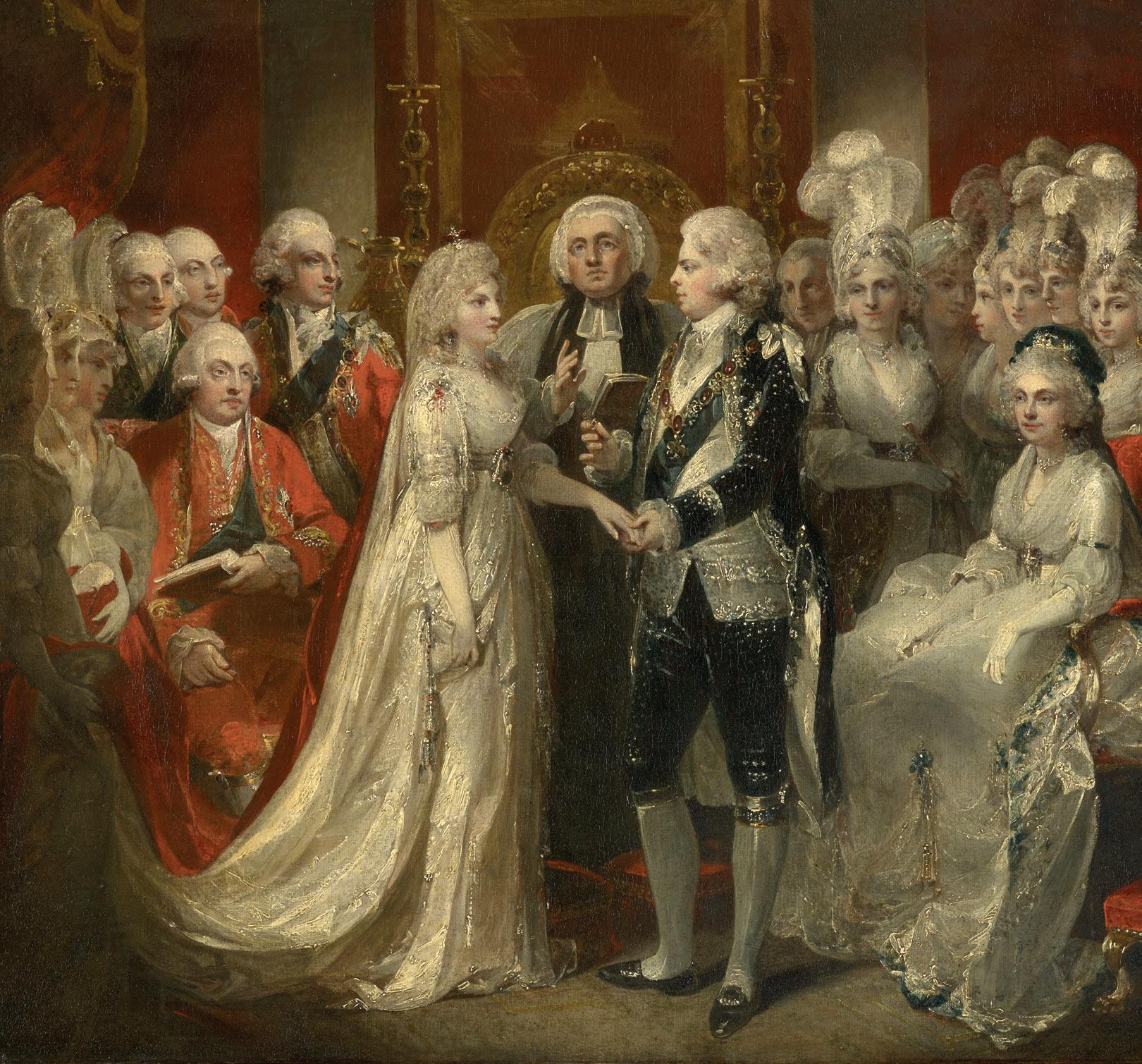
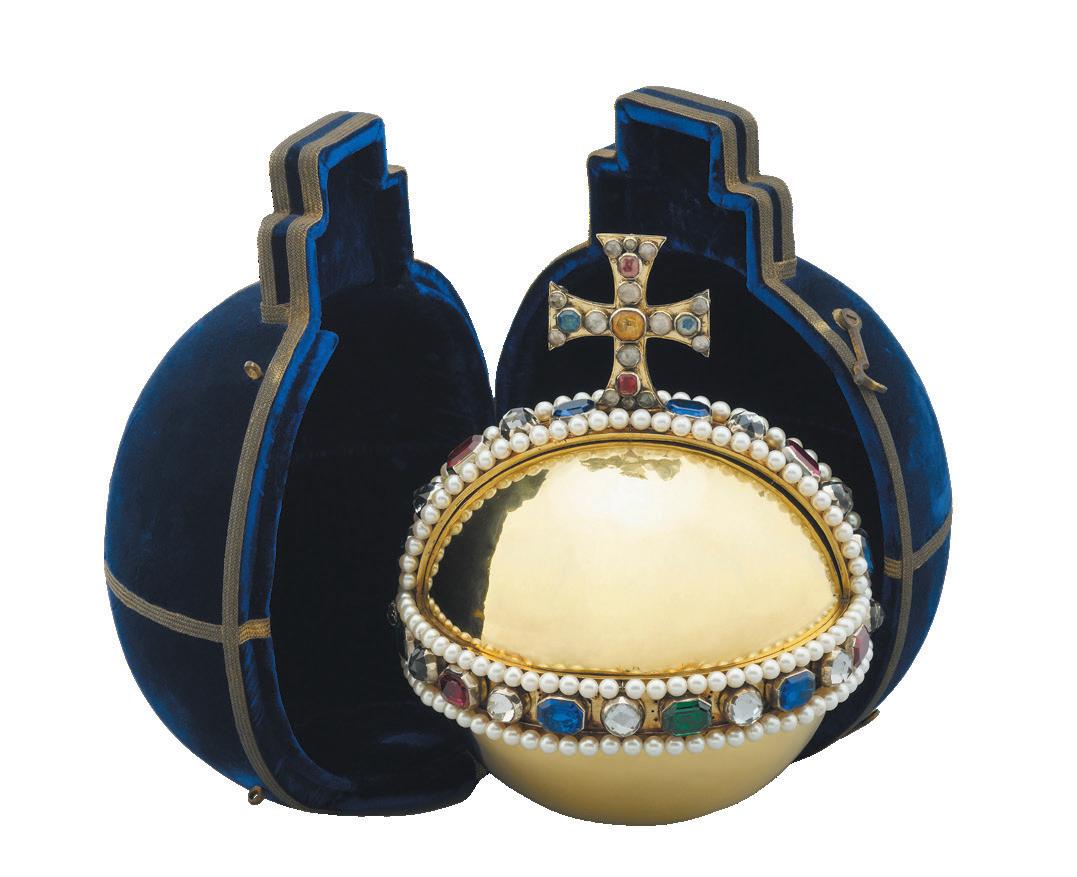
In 1794, George, Prince of Wales (later King George IV) became engaged to his German cousin, Princess Caroline of Brunswick despite having never met her – and despite already being married! In 1785, the Prince had secretly married the Roman Catholic widow Maria Fitzherbert, one of the great beauties of her day and the love of his life. However, the marriage was not recognised in British law as he had failed to get the permission of his father, the King. By 1794, the Prince was under pressure to produce a legitimate heir and was severely in debt.
Above
TheMarriageof GeorgeIVwhen PrinceofWalesby Henry Singleton, 1795. The bride and groom met for the first time just three days before their wedding.
© Royal Collection Enterprises Limited 2025 | Royal Collection Trust Left
Queen Mary II’s orb, 1689. As Mary ruled as joint sovereign with her consort
William III, she required Crown Jewels equal to that of her husband, including a new orb and sceptre.
© Royal Collection Enterprises Limited 2025 | Royal Collection Trust
Marriage seemed the only way of increasing his allowance and Parliament agreed to raise his income from £60,000 to £100,000 a year if he contracted a marriage with an eligible princess. They also provided £20,000 for the wedding ceremony itself.
The match with Princess Caroline was doomed from the start. The couple met for the first time three days before the wedding. The Prince was so repelled by Caroline’s appearance that he practically fainted at the first sight of her and called for a glass of brandy to revive himself. The Princess was similarly unimpressed: 'I think he’s very fat and he’s nothing as handsome as his portrait’ she declared. When George arrived at the chapel in St James’s Palace on their wedding day, he was drunk and looked ‘like death and full of confusion’. One guest remarked that he had never seen a ‘more discontented meeting’ adding it put him in mind of a ‘gala in a black hole’. The wedding night was no better. Caroline later remarked, ‘Imagine what it was like to have a drunken husband on one’s wedding day, and one who passed the greatest part of the bridal-night under the grate where he fell, and where I left him.’ Remarkably, this union produced a child, Princess Charlotte, but within a year of their marriage George and Caroline had separated.
In 1804, Princess Caroline was allocated an extensive apartment of some 48 rooms at Kensington Palace, where she entertained lavishly and was visited by her daughter. She eventually moved abroad in 1814.
‘ I DON’T THINK I COULD EVER HAVE A BAD DAY HERE!’
In October 2024, Ryan Brown, an Explainer at Hillsborough Castle, realised his boyhood dream – to be sent to the Tower! He’s now in training as a Yeoman Warder and told Inside Story how it’s going so far.
Ryan is the first member of Historic Royal Palaces’ staff to have worked at another palace before becoming a Yeoman Warder, an ambition he has cherished throughout his long Army service. Retiring from the forces in 2019 after 22 years, he returned to his home in Lisburn, NI, with his wife Lesley and immediately took up a role of Explainer, a visitor-facing job in which he demonstrated his storytelling prowess.

This skill, amongst others, helped him win a coveted role in the Yeoman Body. When he spoke to Inside Story, Ryan was just seven weeks into his six-month training and probation period under the mentorship of experienced Yeoman Warder Tracey Machin. Ryan is living near to the King’s House, the Ravens tap their beaks on the window of his flat to say hello and so far, he loves every minute of it!
Inside Story (IS) What have your first few weeks been like?
Ryan Brown (RB) I don’t think I could ever have a bad day here! It’s awe inspiring how much there is going on behind the scenes that tourists never see, and my days are flying by as I try to take it all in.
After a two-week induction when I met everyone here, I began my training, firstly by ‘shadowing’ Tracey, who is my main point of contact and can answer all my many questions. I learned how Yeoman Warders move to different posts around the Tower during the day, and about our many responsibilities. It’s not just a case of standing there posing for photos, most days you have to guide visitors, keep them safe, and entertain them as you tell the story of the Tower.
IS Why did you choose to work at Hillsborough Castle first?
RB By the end of my 22 years of Army service I had the right qualifications to become a Yeoman Warder, and I knew the application criteria off by heart! So, I kept a close eye on the Historic Royal Palaces’ jobs website, but when the Explainer role came up it seemed to me that job required many similar skills, and it coincided perfectly with me leaving the Army. I believe everything happens for a reason, and I thought if I work hard and do well as an Explainer, I’ll apply to the Tower, because if I can’t do it here, I definitely won’t be able to do it there. I was totally honest about this at the interview, and when I finally achieved my dream after over five lovely years at Hillsborough, all the team were over the moon. I think they’re still celebrating, actually!
IS How is the Tower story learning going?
Join a Yeoman Warder tour at the Tower of London to hear stories from a thousand years of history. Tours run daily.
RB Well … I enjoy performing to an audience, as in my previous role, but this is story telling on steroids! There are 9,000 words of Tower history that have to be learned verbatim – this is a script, not a prompt.
Tracey takes me through my ‘story’ training (along with many other tasks), and this is closely monitored by my Yeoman Serjeant and the Yeoman Gaoler. The final test is to deliver the whole ‘Yeoman Warder Tour’ with no stumbling.
At some stage during my probation, I will be sworn in as a Member of the Yeoman Body of HM Tower of London; then at the end of my probation I will be sworn in as a member of the Yeomen of the Guard in Extraordinary.
IS How do you memorise all the facts and dates you will need to know?
RB I make constant notes; I watch and learn. You will often find me standing behind a Yeoman Warder who is addressing visitors, scribbling away in my notebook like someone from the FBI! And I’m never without a page or two from the story file, so when I get a spare moment, I take it out and rehearse it to myself. I get some teasing, but everyone is really supportive.
IS Do you have a favourite period of the Tower’s history that you would like to travel back in time to see?
RB I’m fascinated by the Tudor period, especially the Tower under Henry VIII, as during his reign he decreed that members of the Yeomen of the Guard remain at the Tower to become Yeoman Warders, and we’ve been here ever since! I can imagine the splendour of the royal palace that once stood to the south of the White Tower, although sadly nothing survives of it today. So, I would like to travel back to June 1533, just after Henry had had it all done up for his new queen, Anne Boleyn. Sadly, she didn’t get to enjoy it for long …
Ryan Brown was talking to Inside Story Editor Sarah Kilby
Yeoman Warders need to have at least 22 years of military service; to have reached the rank of Warrant Officer and to have been awarded the Long Service and Good Conduct medal.



The arrival of spring sees conservators back at Kew Palace, removing dustsheets and freshening the house for our first visitors, as Preventative Conservation Manager Kerren Harris and Preventive Conservation Technician Peter McEachern describe. Inside Story was there when the winter covers came off.
Kew Palace contains a treasure trove of modern textiles, carpets and wallpaper as well as historic furniture, textiles and paintings, almost all of which are on open display for seven months of the year, before the palace is closed between October and March. In the autumn, we put the palace to bed for the winter, carefully wrapping the objects to guard against a variety of environmental changes and protecting objects from light. So, just as servants of the Royal Family arrived in advance of a spring visit, we also spend several days at Kew waking up the palace, removing winter protection and making it ready for a new season of visitors.
Waking up the palace is a complex procedure, reflecting the care we take over the winter period to protect it. One of the first tasks of the spring re-awakening is to remove all the top layers of dust protection. Dust can cause huge problems if it’s left on the surface of an object, particularly if left for an extended period over a cold, dark winter, as it can become sticky and difficult to remove.
Every object has its own tailor-made dust cover, either made from calico or a breathable material called Tyvek®, and it takes us about a week to carefully remove these and any extra tissue paper wrapping below, slowly checking each object over as it emerges from its protective layers.
Your support provides the specialist care and equipment needed to safeguard Kew Palace now and for the future. Find out more about our world-leading conservation work at hrp.org.
uk/about-us/ collections
Below Textiles are uncovered in preparation for reopening Kew for the new season.
The whole of the palace is vacuumed top to bottom before the winter shut down, extra attention is paid to areas under furniture and dark corners. We scrutinise all nooks and crannies for pests that could try to find a hiding place over the winter. We do the same in March, ensuring that objects and hidden corners are fully checked and given a thorough conservationstandard spring clean before opening.
Throughout the year we are constantly on the lookout for the common clothes moth (Tineola bisselliella) and the varied carpet beetle (Anthrenus verbasci) as these can damage our fragile textiles. The adult common clothes moths are shiny, grey-fawn in colour and 5-7mm long.


They crawl rather than fly and their larvae do not create a cocoon like the case-bearing moths but instead make a continuous silk tunnel as they chomp their way across the surface of textiles. They can eat wool or soiled silk that you might find on upholstered chairs or carpets, and feathers or fur found in natural history collections.
Adult varied carpet beetles have distinctive patches of orange, black and white on their wing cases and thorax, and are 2-3mm long. Larvae are short, fat, have light and dark brown stripes and hairy ridges. As they go through stages of growth, they leave behind several hairy cast skins before becoming adult beetles. Their common name is ‘woolly bears’ and the larvae eat woollen textiles and objects made of hair, feathers or fur.
We scrutinise all nooks and crannies for pests that could try to find a hiding place.
Keeping collections cosy
Visit your digital hub, TheVault, to go on a members' virtual tour of the attics and explore hidden spaces at Kew Palace.
Above Unglazed paintings, like this portrait of Queen Charlotte on loan from the Royal Collection, all require soft cotton straps to ensure that, when covered, the acid free tissue and Tyvek® cannot come into contact with the delicate paint surface. Acid free tissue is used to protect the gilded frames from the cotton tape.
The layers of acid free tissue paper and Tyvek® added before winter both shield objects from dust and protect them from sudden changes in temperature and humidity within the rooms. Although extremes of temperature or relative humidity (RH) can be a problem, it is rapid changes in either that cause the most damage. This can make fragile objects shrink or swell, causing cracks to open up or decorative finishes, such as veneer, to come away. If the RH is under 40 per cent, organic materials such as wood, paper, and animal glue and varnish can dry out, become brittle, shrink and crack. If it reaches 65 per cent or more, these materials will swell and expand, causing buckling and warping. Large fluctuations can cause gilding, paint and veneer to detach, and dust becomes more ingrained in textiles. Wrapping the collections in this way offers layers of buffering to protect the objects from any potential damage.
Into the light
Covering items also prevents sunlight falling on them while the palace is closed to visitors. Sunlight not only raises the temperature in a room to the detriment of the collection, but it can cause devastating damage to objects and interiors, fading their dyes and inks, bleaching or darkening wood and making materials such as leather, textiles and paper brittle.
Over time, sunlight can cause irreparable damage to exposed coatings and finishes on furniture, paintings and wall surfaces. However, we also need to be careful that the covers don’t damage the very delicate surfaces they are meant to protect, which means extra layers that need to be carefully removed in spring. Each painting has straps to hold the cover away from the canvas, then the whole is covered in layers of soft tissue paper and Tyvek®.
We treat every object as meticulously as the next. For example, the apothecary chest in Queen Charlotte’s Bedroom gets a gentle clean with a soft pony hairbrush and is carefully uncovered and opened. The books on display, which have been covered with tissue and closed over winter to give spines and pages a rest from light, are once again revealed and opened to give visitors a fascinating glimpse into Kew’s royal history. We also cover objects made from delicate materials, such as the original fabric on Queen Charlotte’s chair and a delicate paper fire screen with tissue before wrapping them to avoid their surfaces being snagged by calico covers when we remove them in spring.
Kew Palace re-opens 29 March 2025.
Members get 10% discounted tickets to Kew Gardens with code HRP10 Once inside, visit Kew Palace for free.
We have an online environmental monitoring system that allows us to keep track of the temperature and RH within the palace during the closed season. Our radiators are also fitted to special humidistats, which ‘talk’ to the environmental monitoring equipment within the rooms. This tells the radiators when to switch on and off depending on the amount of moisture in the atmosphere, to stop the palace getting too damp or cold over the winter. So come spring, we can be confident that everything is safe and secure while the house has been happily hibernating, waiting for the moment when we return to get the palace ready for you to enjoy once again
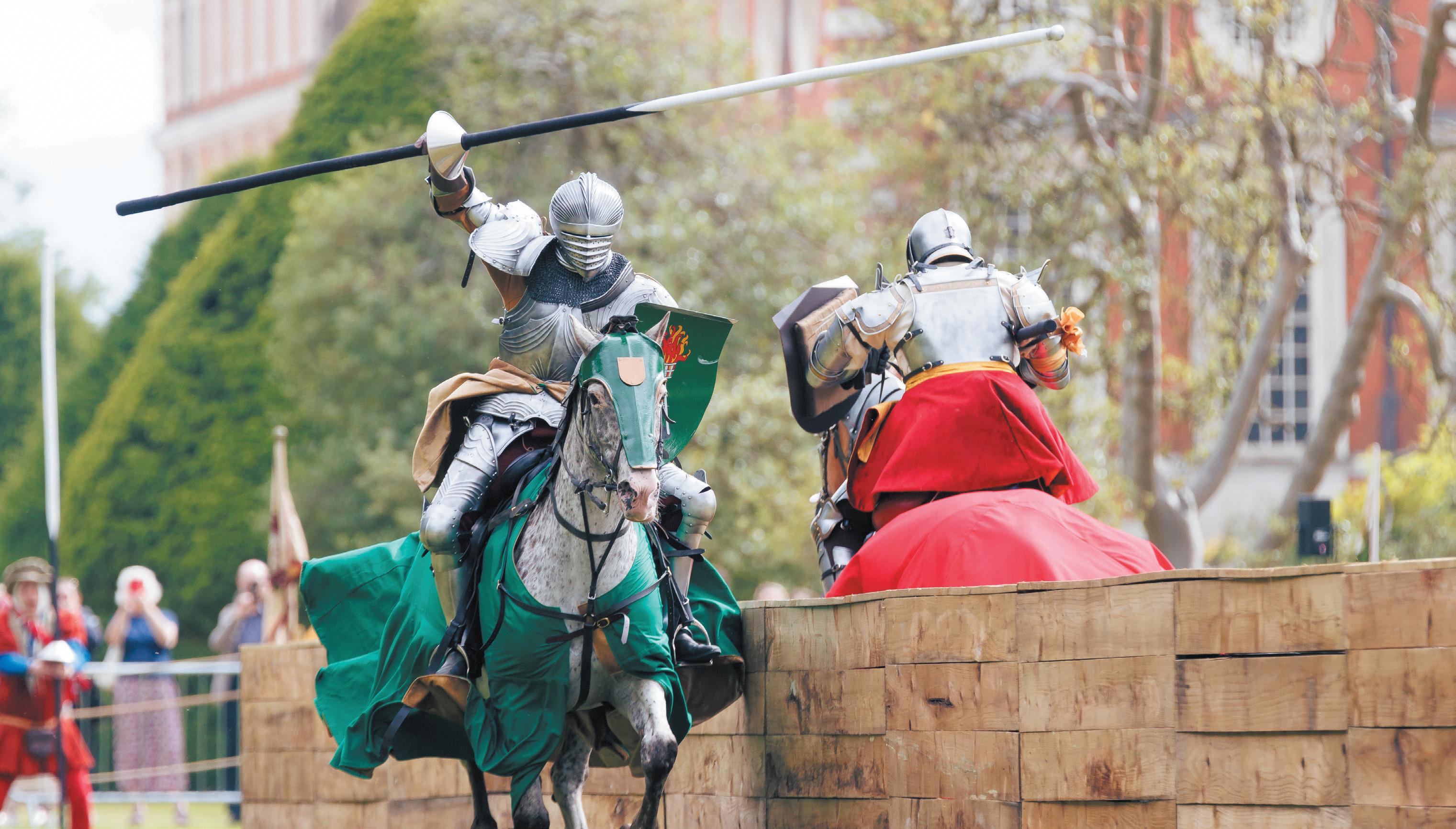

Ready to leave your mark on history? Design your own heraldic shield for a chance to win a prestigious part in Henry VIII’s joust this summer as ‘Herald of the King’s Favour’.
The jousting experience Henry VIII rides again at Hampton Court Palace, 12-13 and 19-20 July. Our noble winners will be made heralds for their chosen joust and present the King with a favour (a special token from a supporter) for his lance, assist with the scoring, and watch the joust with their family from a position of honour.
Don’t miss Henry VIII’s Joust at Hampton Court Palace, 12-13 and 19-20 July. Members go free, pre-booking required.
Can you rise to the challenge?
How long did Henry VIII stay in the saddle?
Not long – joust a minute!
This is a chance to show off your creativity and imagination by designing your own unique shield. You can choose any animals, real or mythical, fierce or friendly, to represent you. Or maybe you prefer an abstract design that sums up your heraldic personality. It’s up to you!
Hint: Our judges LOVE bold colours!
1 Download a shield template from your members’ digital hub The Vault (scan the QR code below).
2 Design your shield.
3 Email it to us at insidestory@ hrp.org.uk along with your full name, age and membership number, by 08 June 2025.
For full terms and conditions, please see hrp.org.uk/ membership/ joust-competition


CELEBRATING CREATIVITY: LAST YEAR’S WINNERS
Get inspired by some of last year’s talented young artists. Each winning shield displays vivid imagination and creativity.
DISCOVER MORE
What type of knight are you?
Visit your members’ digital hub to take our fun quiz.


From blooming days out to Easter bunny hunts, we’ve got a host of incredible adventures lined up for you.
Explore our top picks for exciting events to keep the whole family smiling from spring through to summer. Check hrp.org.uk for more details, members go free (unless otherwise stated).
Hillsborough Castle and Gardens
Tower of London Hampton Court Palace
DISCOVER MORE
Find our full programme of events.

15 March – 05 May (subject to weather)
Spring Spectacular
Visit your members’ digital hub – TheVaultto find fun printable Lindt GOLD BUNNY and marvellous minibeasts colouring pages to enjoy at home!

Open
Royal Beasts
Meet the exotic animals that once lived at the Tower of London in our interactive displays.
Our gardeners have planted thousands of bulbs. Why not start a nature diary and keep track of all the plants you’ve seen?
16 March
St Patrick’s Day
Celebrate with traditional Irish tales and music that will make your toes tap!
05 April – 21 April
Pioneers at the Palace
Meet our costumed characters as they share fascinating stories about their adventures around the world.
Daily live performances*.
05 April – 29 June
The Poet’s Predicament
Did you know that the famous poet, Geoffrey Chaucer, worked at the Tower of London? Join us to find out more about his role as Clerk of the King’s Works.
Daily live performances*.
12-27 April
Lindt GOLD BUNNY Hunt
Search for every adorable bunny statue and claim a Lindt GOLD BUNNY 10g chocolate treat.
(Non-chocolate alternative available on request).
14 April Members’ Minibeast Hunt
Pick up a worksheet and a magnifying glass to search for minibeasts in the Kitchen Garden.
(Members-only. £5)

FEEL GOOD THIS SPRING
03 May – 18 July
Backstairs
Peek behind-the-scenes into the lives of the domestic workers that kept the machine of monarchy moving in Backstairs.
Daily live performances*
16-18 May
New! Feel Good Festival
Be inspired at the joyfulness stage, eat street food and join kids' activities sponsored by LEGO.

29 March – 21 April
Lindt GOLD BUNNY Hunt
Find statues hiding in the gardens and claim a Lindt GOLD BUNNY 10g chocolate reward!
(Non-chocolate alternative available on request).
*Visit hrp.org.uk for excluded dates.

Open
The Crown Jewels Tower treasure hunters, be dazzled by this world-famous collection of 23,578 gemstones.
24-26 May
New! Bahooey
Expect family fun, music, games, circus workshops, surprises and more!
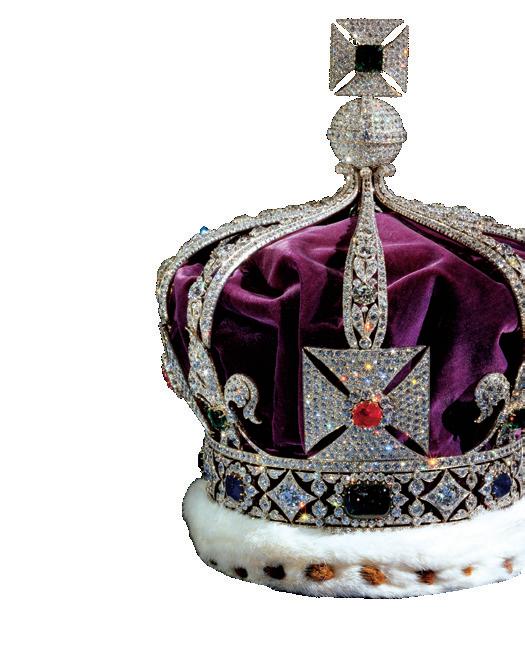
BOOK NOW
Pre-booking required for select events and exhibitions.
Visit hrp.org.uk and see our What’s On pages to find out if you should pre-book.
12-13 & 19-20 July
Henry VIII’s Joust July is for jousting! Cheer along with the crowd for your favourite knight.
23-25 August Food Festival
Enjoy tasty street food, live music and family entertainment.
28 June – 31 August
New! Disney Winnie the Pooh’s Hunny Hunt
Come along to the castle gardens for a hunny-ful adventure.
25 July – 07 September
New! The Peter Rabbit™ Adventure
Join Peter Rabbit on his next big adventure in the palace gardens.

In each issue of Inside Story we put your questions to a member of Historic Royal Palaces’ staff.
Graham joined Historic Royal Palaces, then an Agency of the Department of the Environment, as Foreman Gardener in 1990, after ten years with The Royal Parks. Today, his responsibilities include coordinating, forward planning and managing (‘although I’m still very hands-on’) a team of around 15 gardeners who work across Kensington Palace and Hampton Court Palace.
How have the gardens changed since you first arrived? Things were very different then! A large team of 70-plus gardeners mowed every single blade of grass, cleared rubbish and planted thousands of bedding plants for the rather conventional ‘tight’ planting style popular at the time.
I joined just as exciting developments were taking place within the organisation. Restoration work after the 1986 fire was ongoing and there was a mood for change.
A programme of research led to many exciting discoveries in the gardens, making us review
trying to reduce the amount of heat lost from the greenhouses, for example, and the thousands of litres of water we use currently. We are also working to protect the diversity of species around the palace by protecting habitats, which may change the look of some areas.
how we presented them and resulting in the restoration of the Privy Garden in 1995. The Historic Royal Palaces Agency (as we were then called) was also trying to be more commercial. In my first month, my boss waved vaguely towards the Long Water, where the grass was about a metre high. ‘By the way Graham, there’s a new summer event being held here in about three months ...’. Somehow, we managed to get it ready in time for over 300,000 visitors attending what became the world-famous Hampton Court Flower Show! I shall be forever grateful to Terry Gough (Head of Gardens 1990-2022) who gave encouragement, empowerment and friendship every day we worked together.
What changes will we see in the gardens over the next ten years?
While I think the ‘bones’ of the gardens will stay the same, we will be planting resilient, hardy perennials that can withstand extremes of weather far better than more fragile annuals. We are putting in place more sustainable practices behind the scenes too,
Do you have a favourite part of the Hampton Court Gardens?
It changes depending on the season. Right now, I love all the tulips in April; in summer I’m drawn to the riot of colour in the Pond Gardens; in autumn I love the changing leaves of the Wilderness; while on a winter’s morning the long shadows and frost-tinged trees of the Privy Garden takes your breath away.
What’s your favourite period in the gardens’ history?
I’d love to have been here when the palace gates were first opened to the public in 1838, to join the people strolling around in their Sunday best and enjoying themselves after a hard-working week. This was also when the gardeners began to produce the fabulous formal and patriotic bedding displays to delight the crowds. It must have been so strange for the gardeners, who had never had visitors before.
Is your own garden exquisite?
No comment! I do enjoy my allotment, as I find growing vegetables relaxing. But I don’t tell people there what I do for a living, as I’d never get a moment’s peace …


In the next issue, what would you like to ask Alexandra Stevenson, Curator of Archaeology and Historic Buildings? Send us your questions at insidestory@hrp.org.uk by 31 March 2025.
‘Thank you for providing the best family outings we’ve ever had at the most beautiful places I’ve ever seen. Looking forward to another year!’
Historic Royal Palaces member